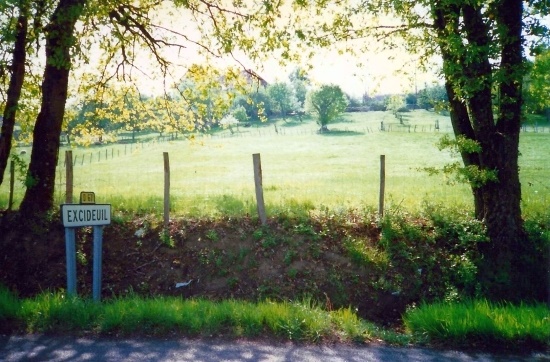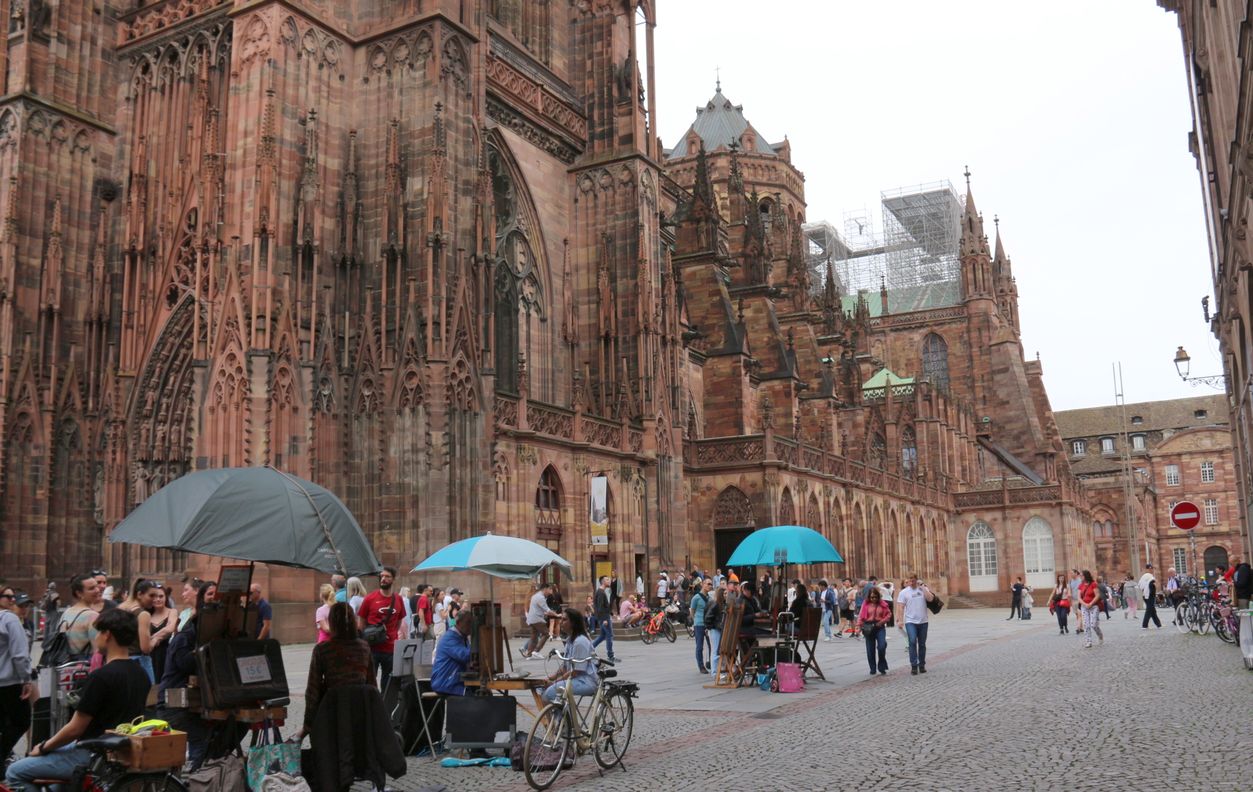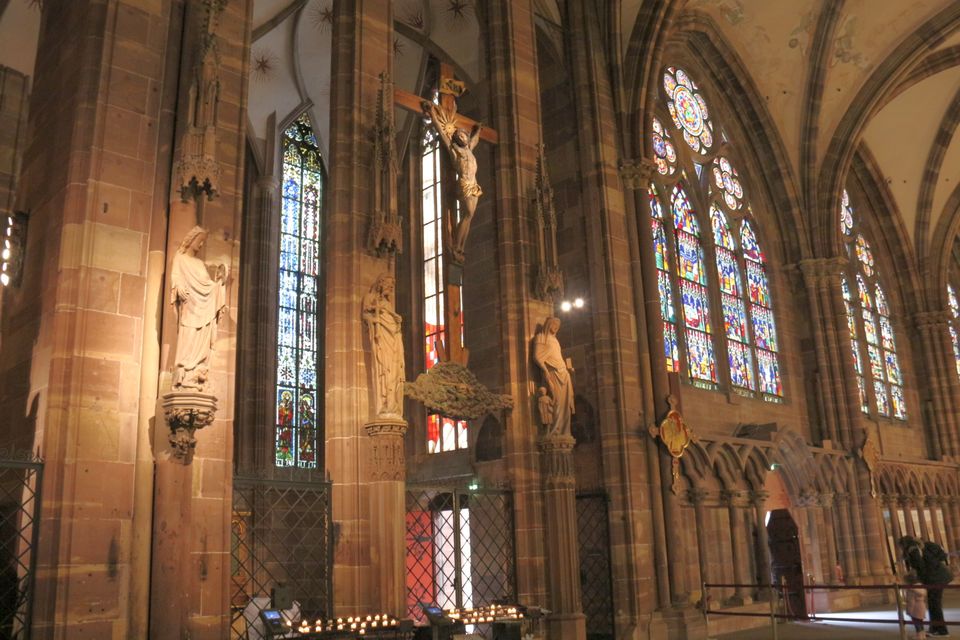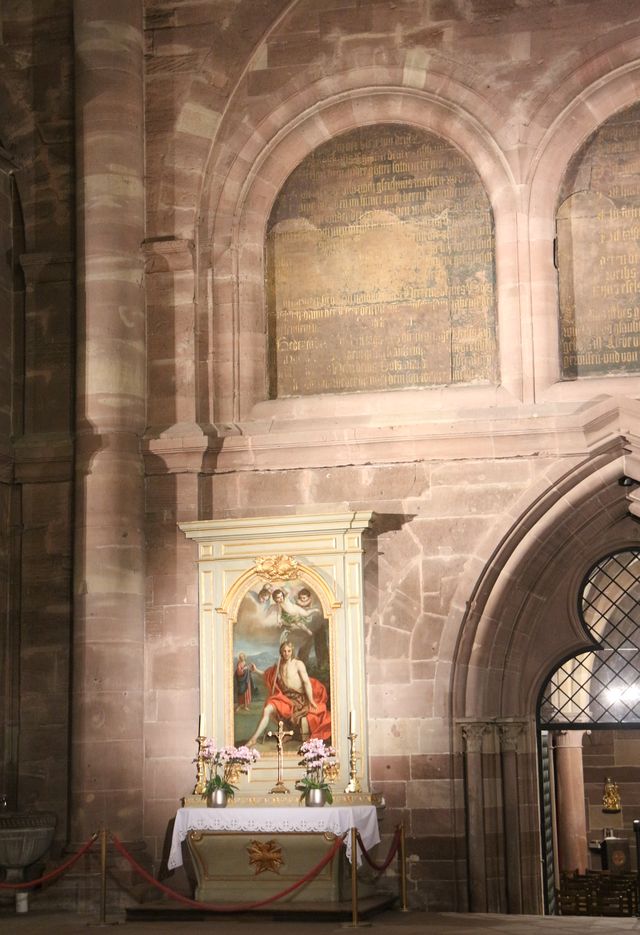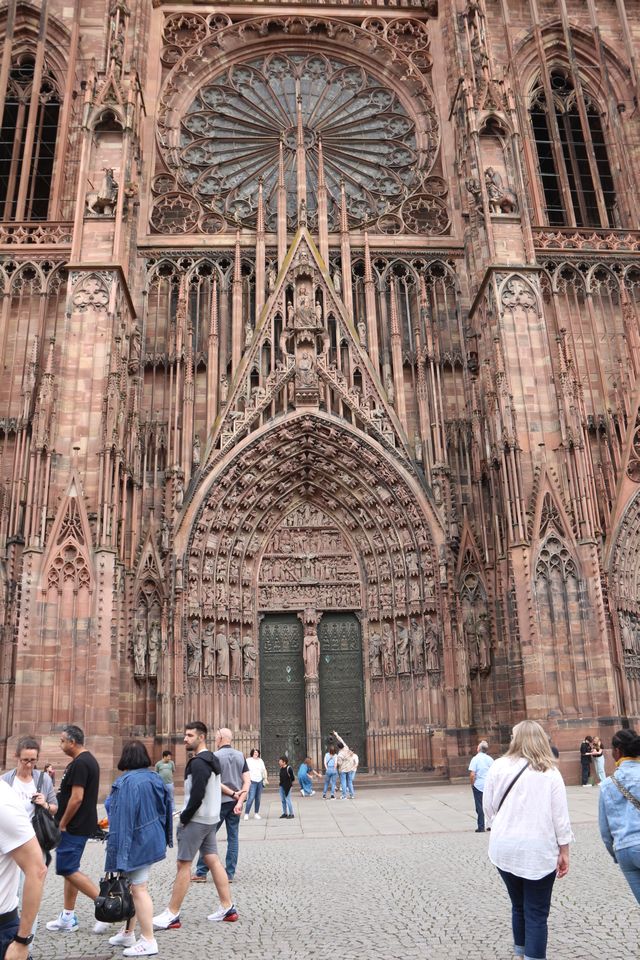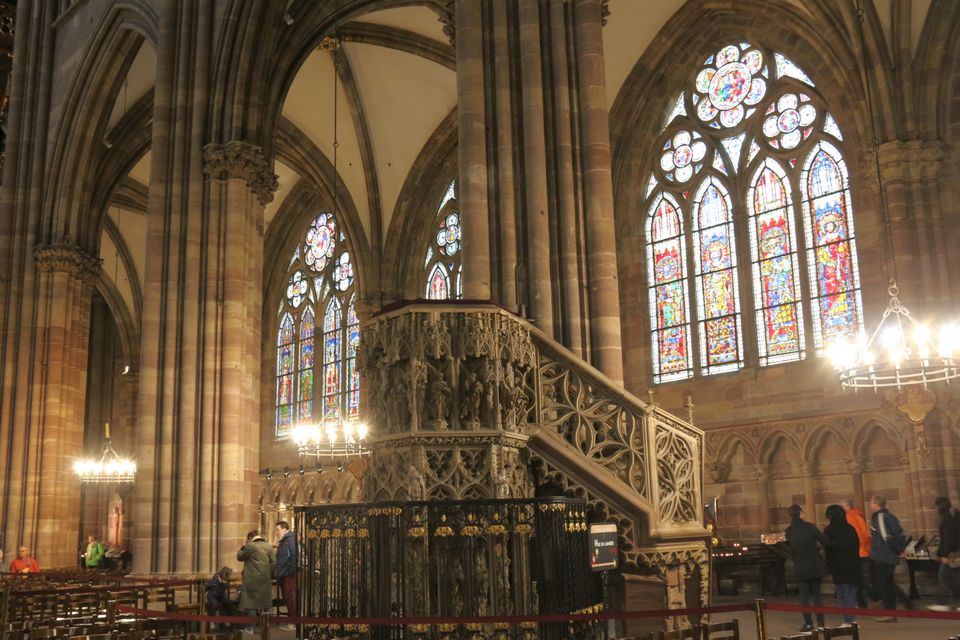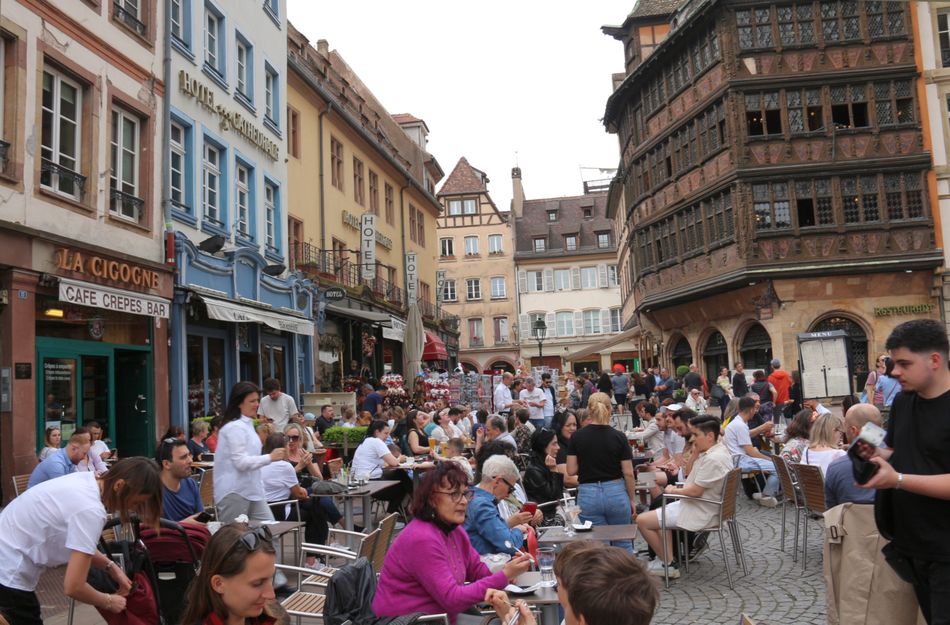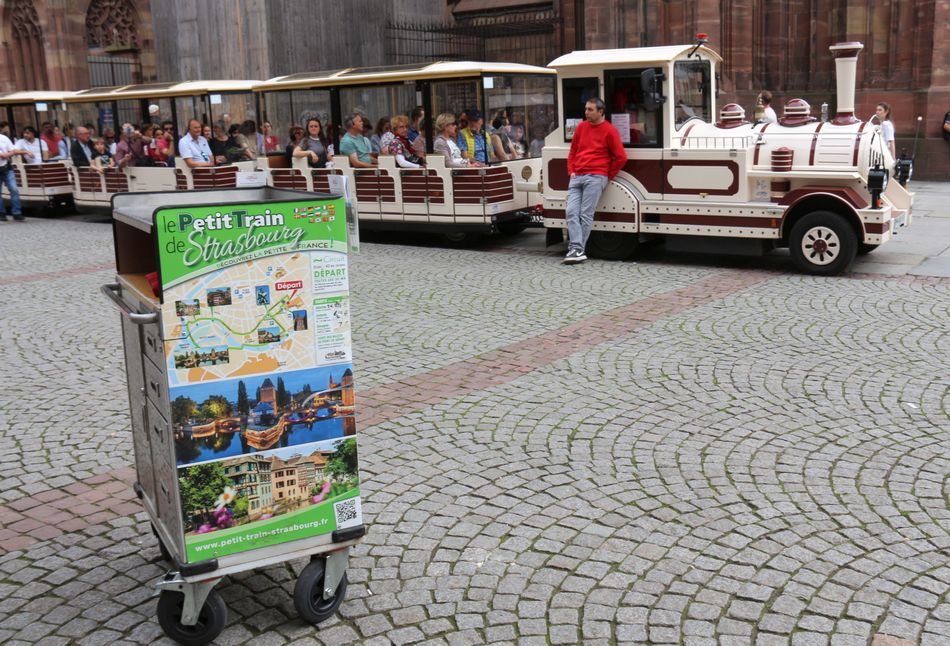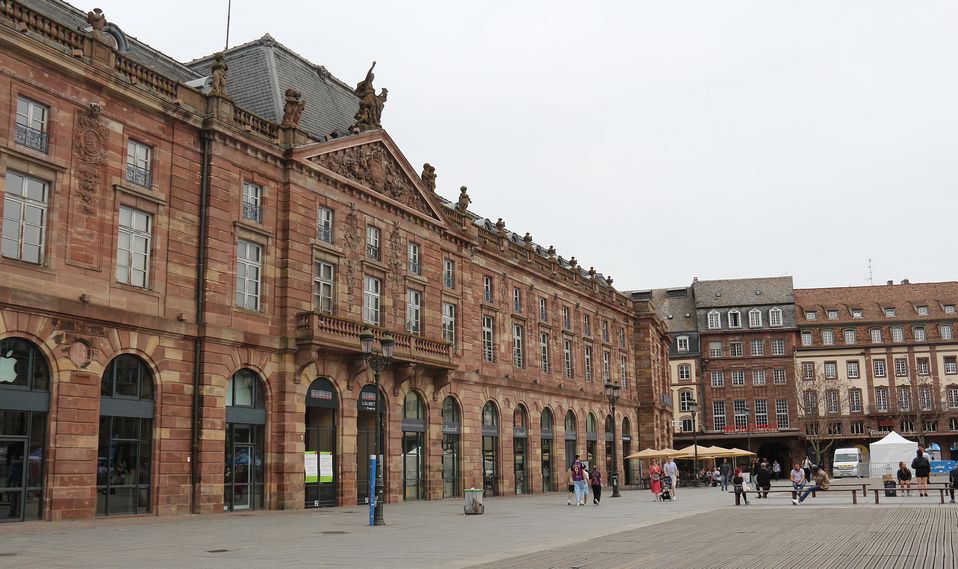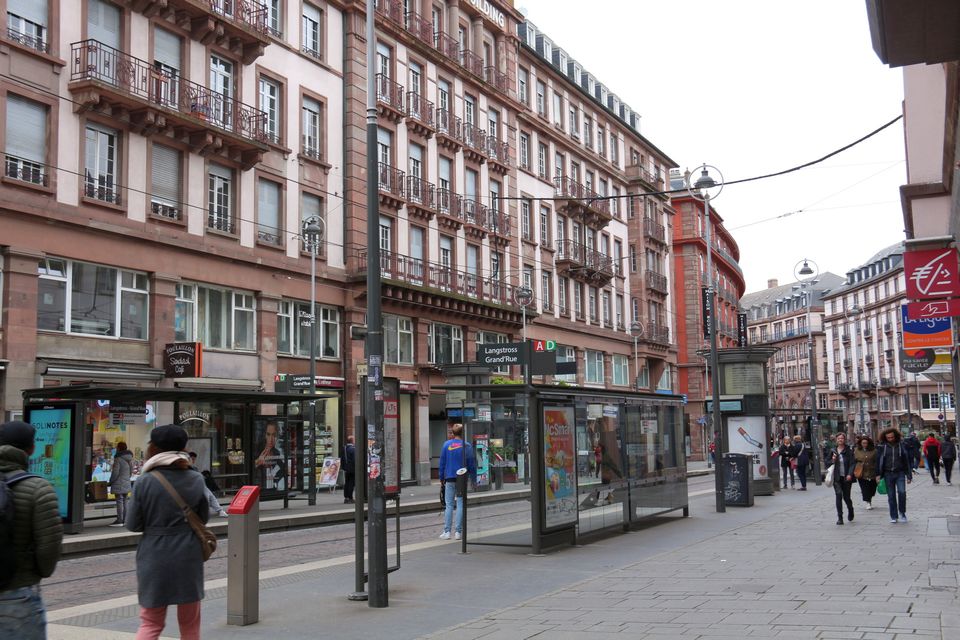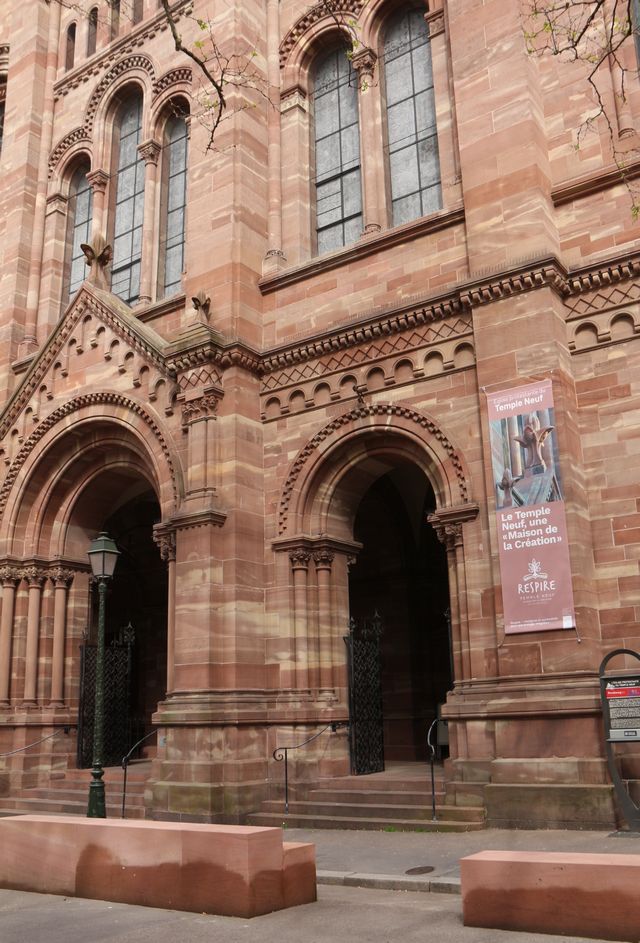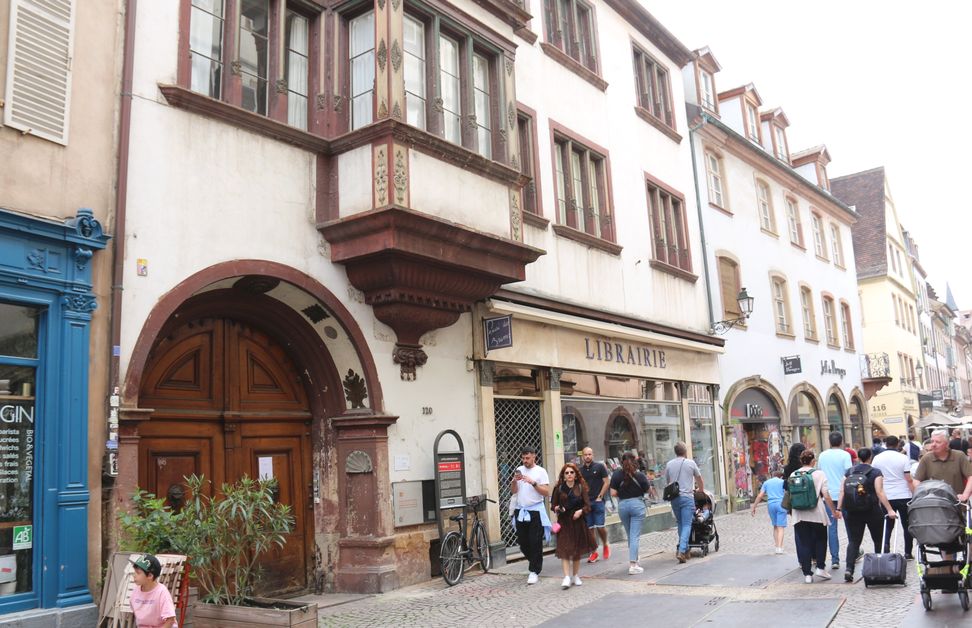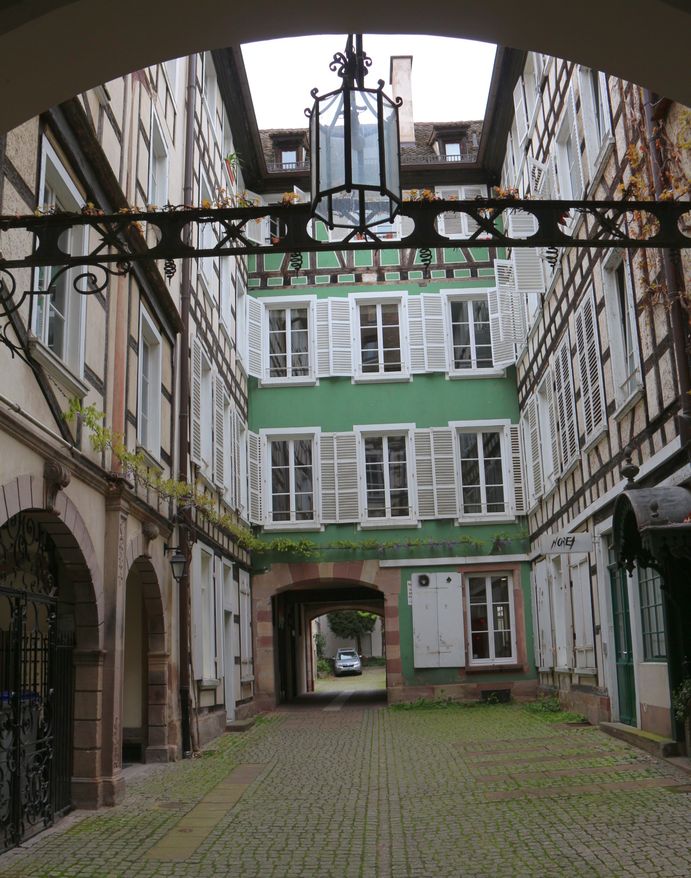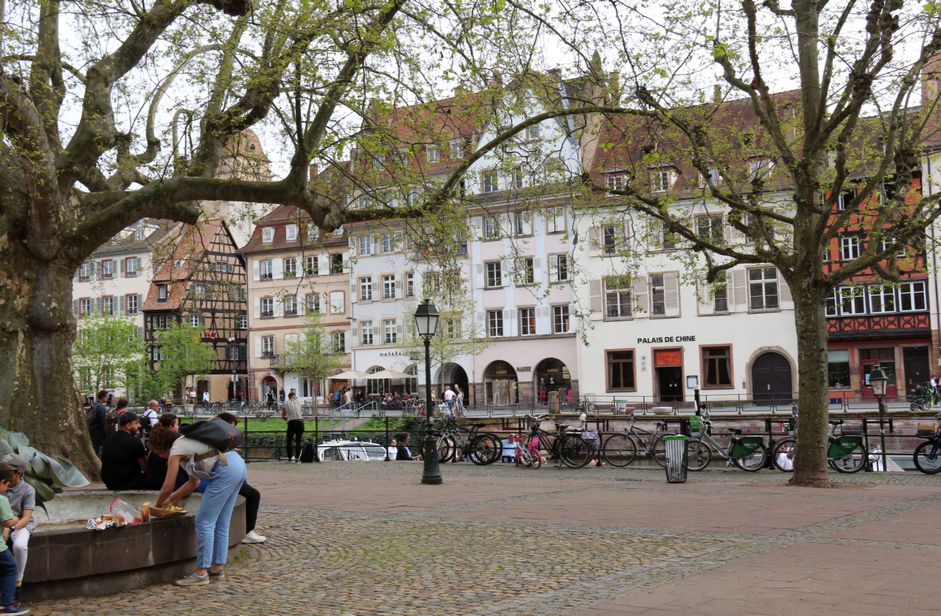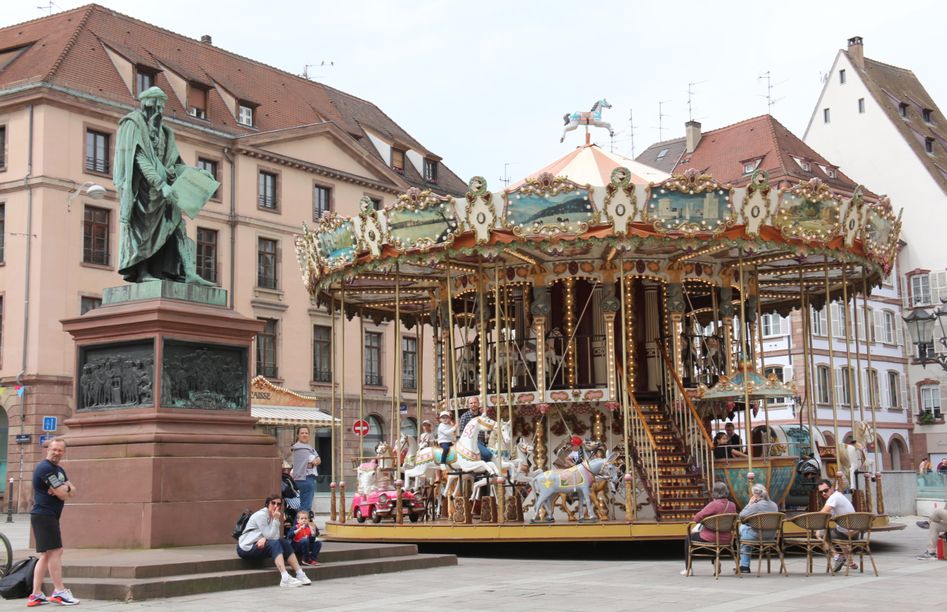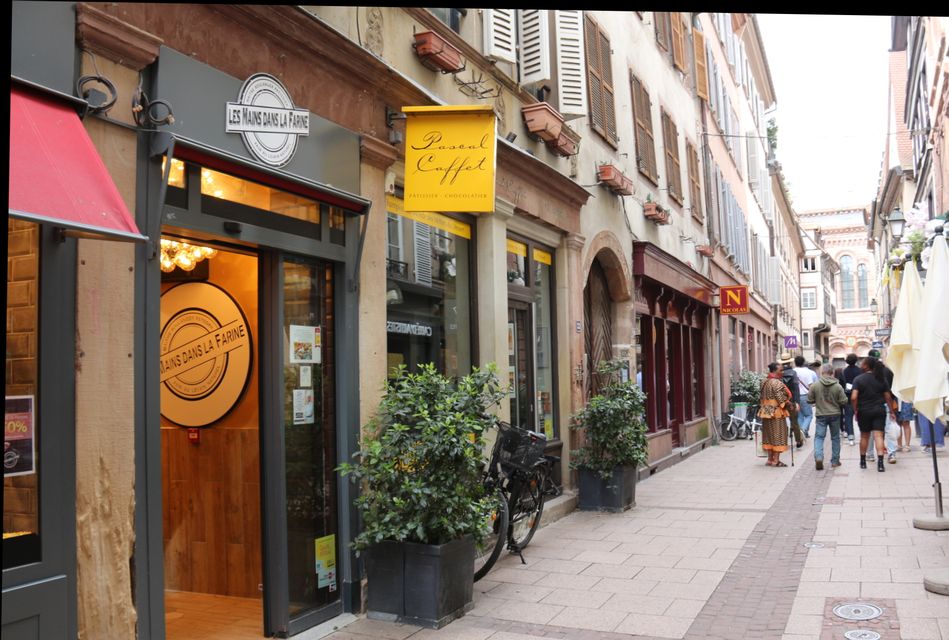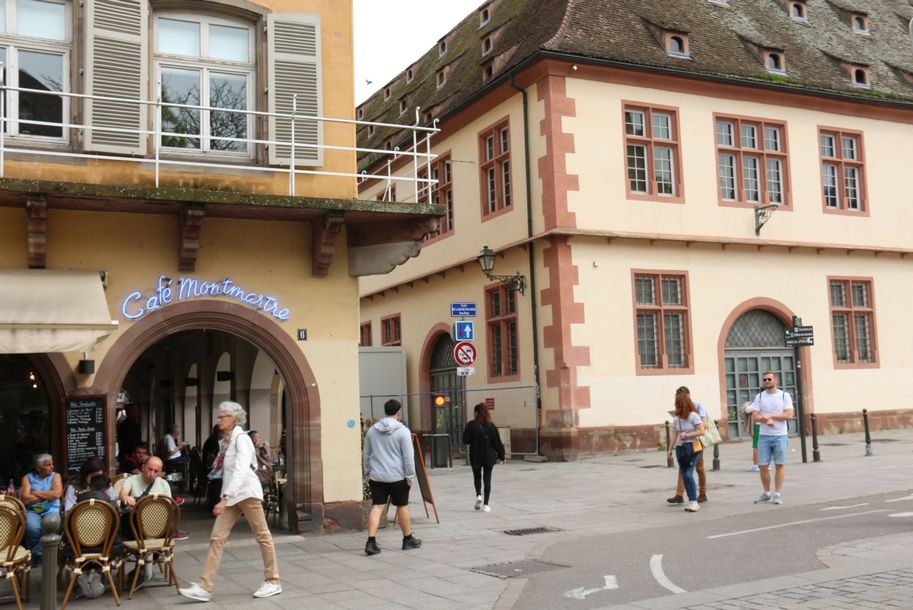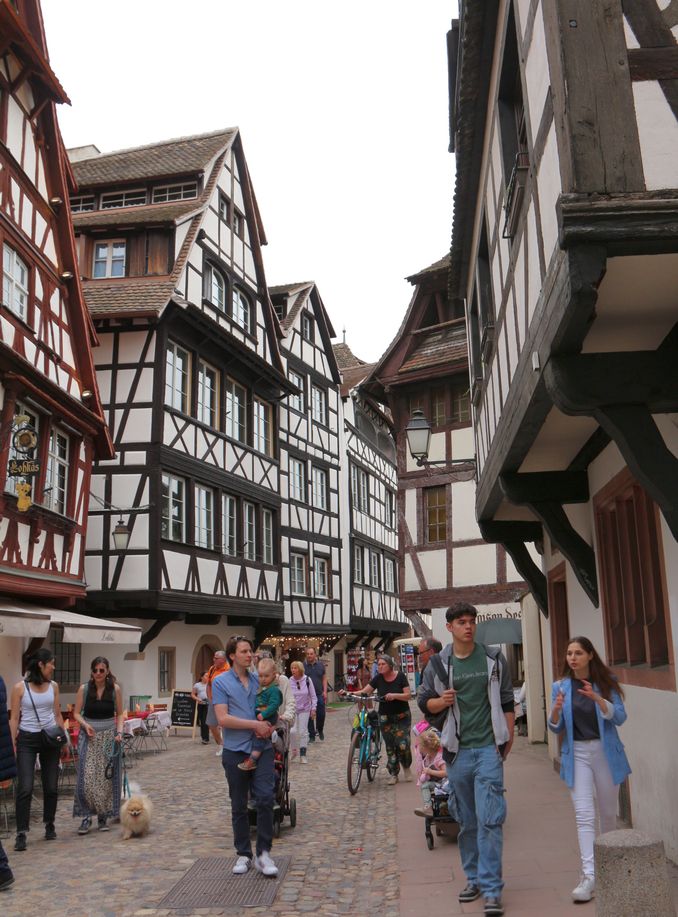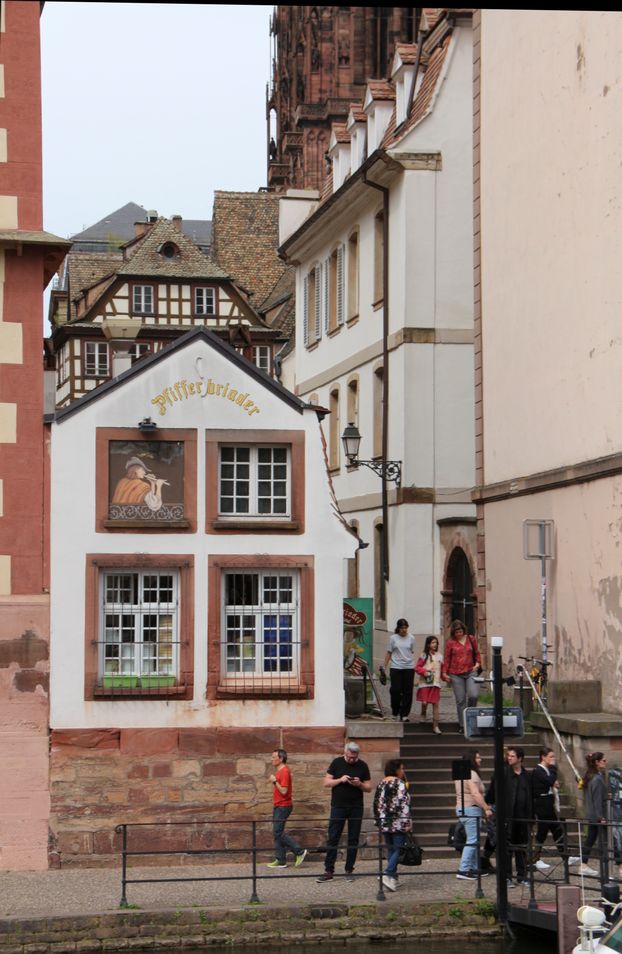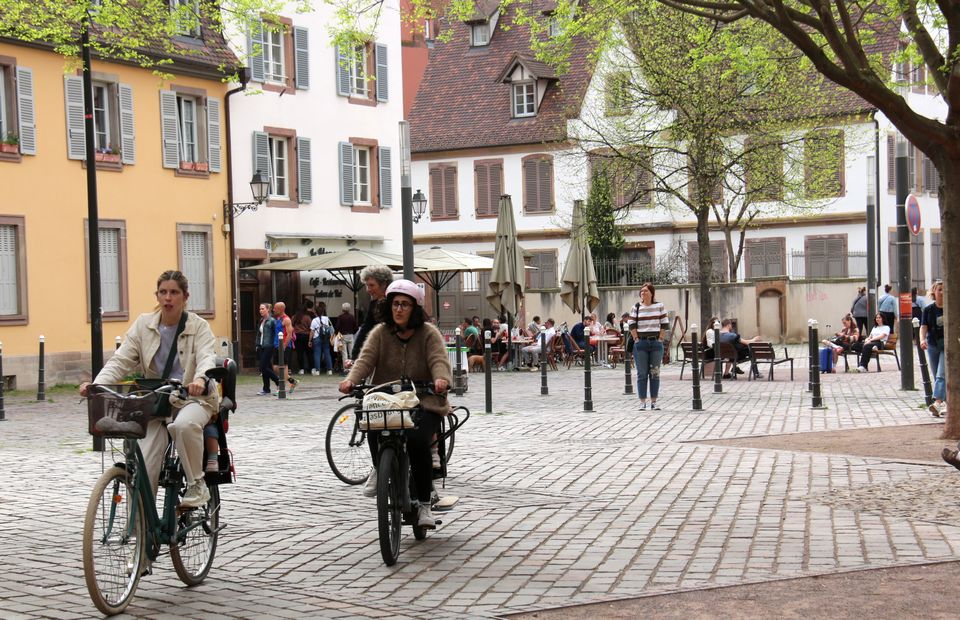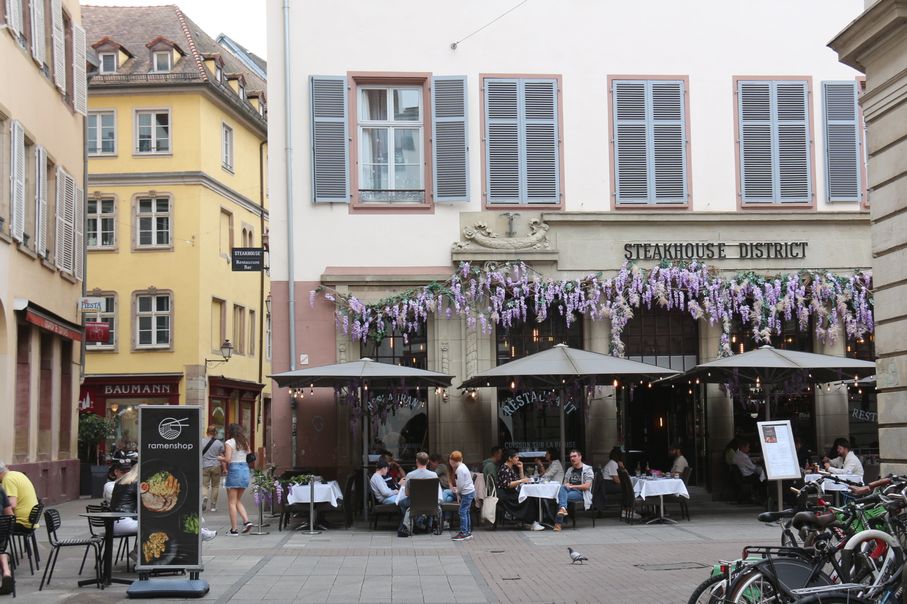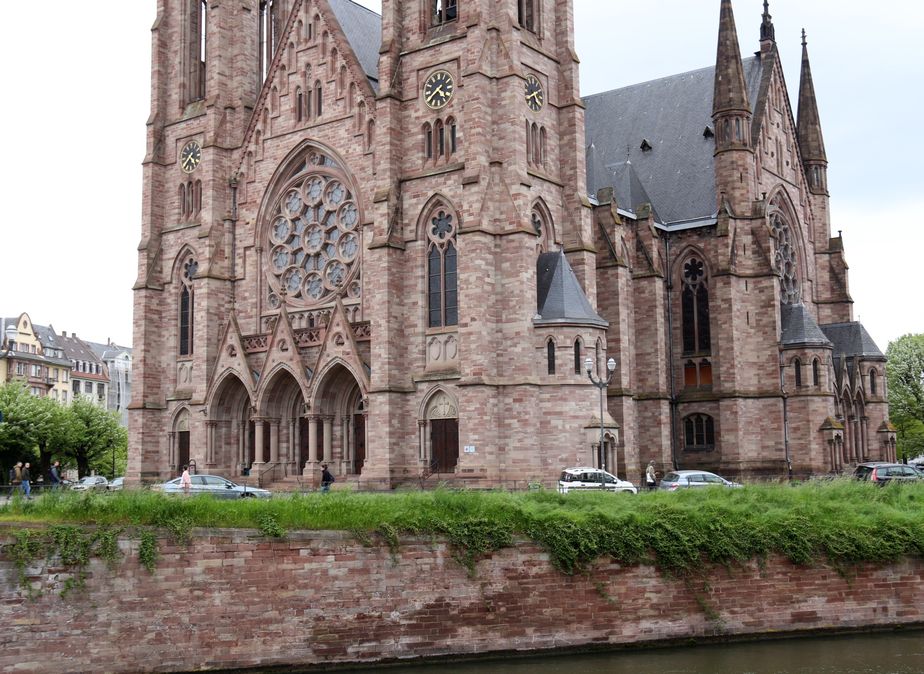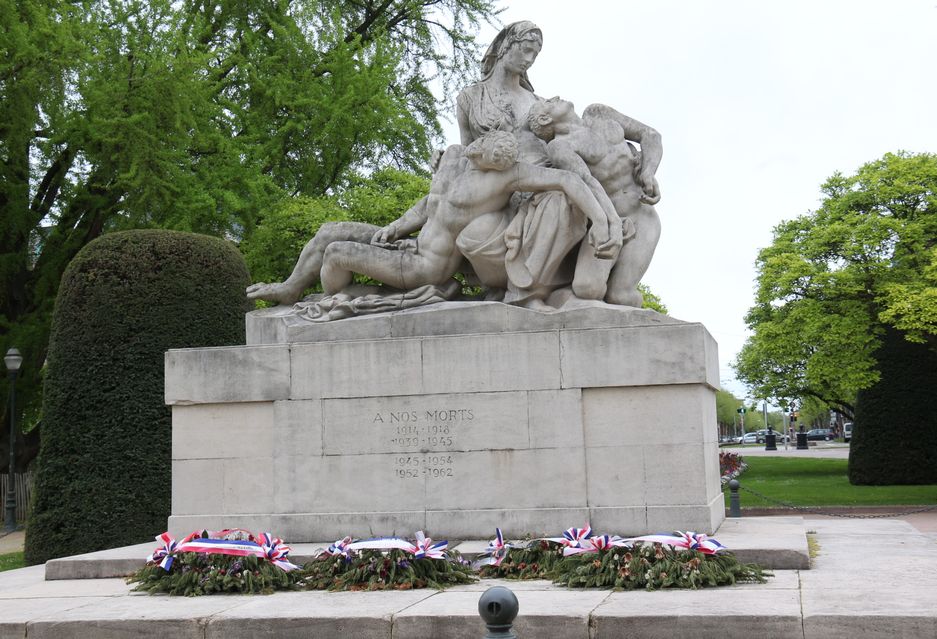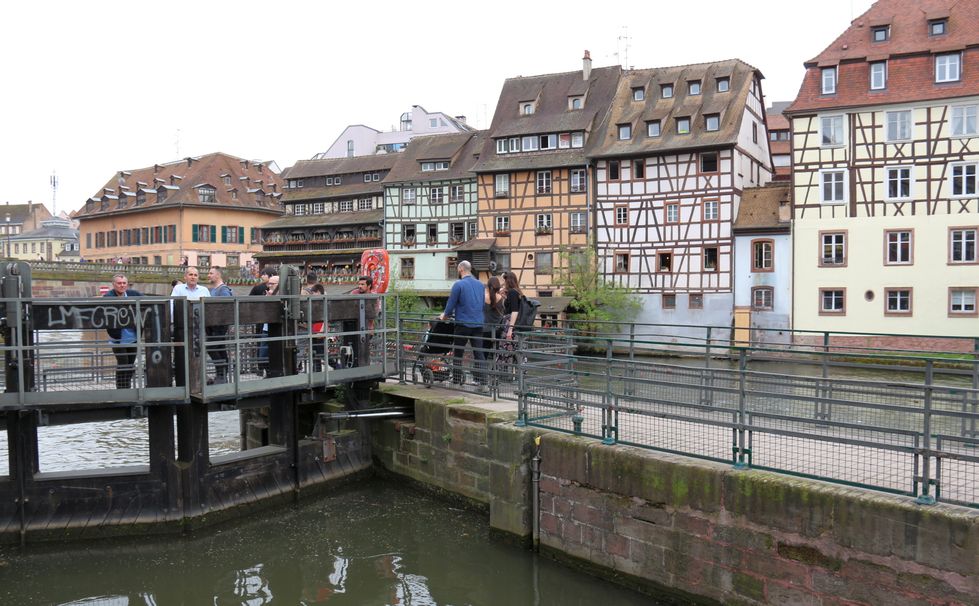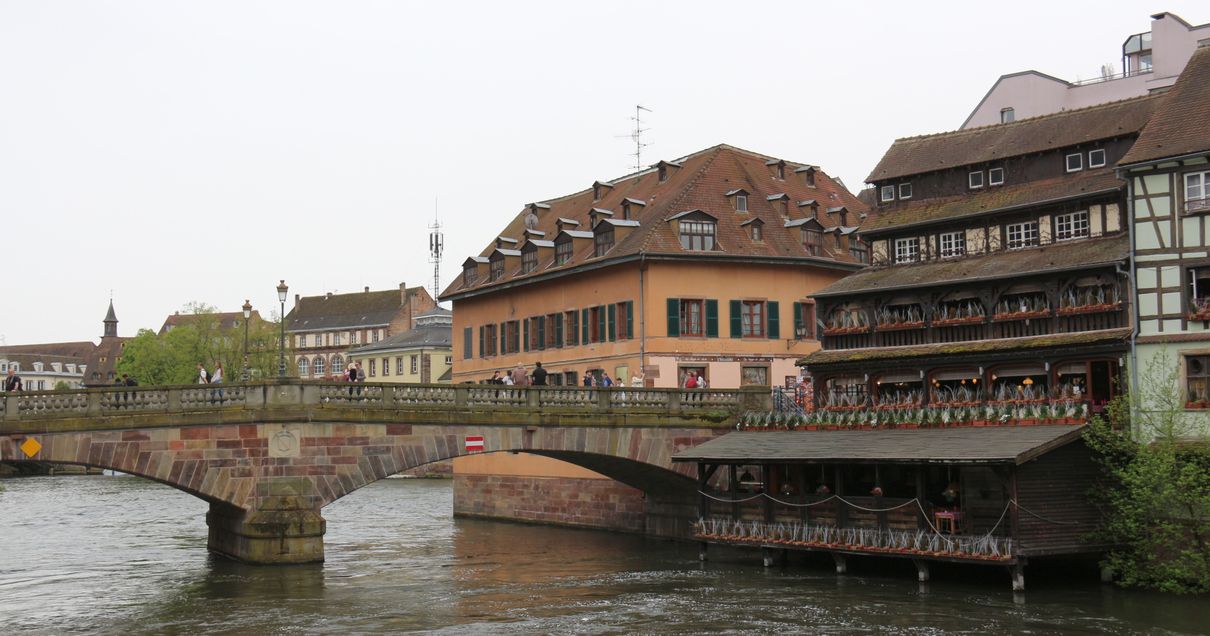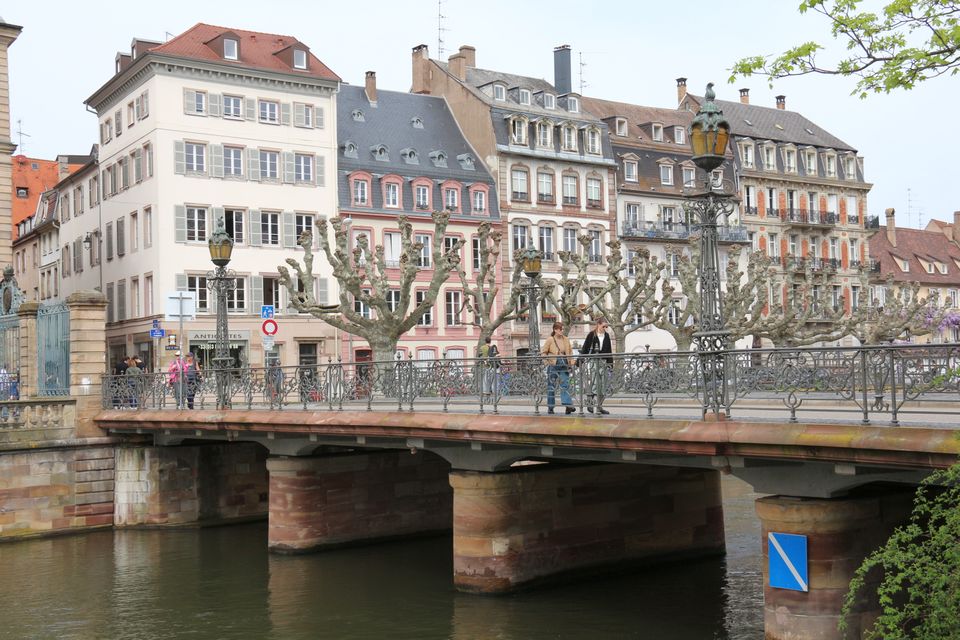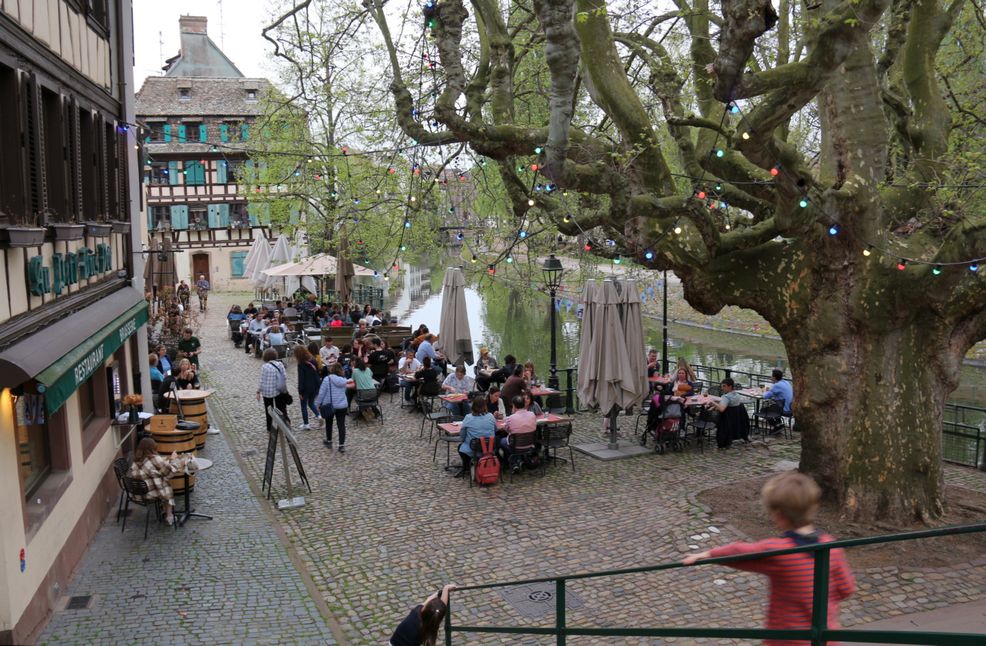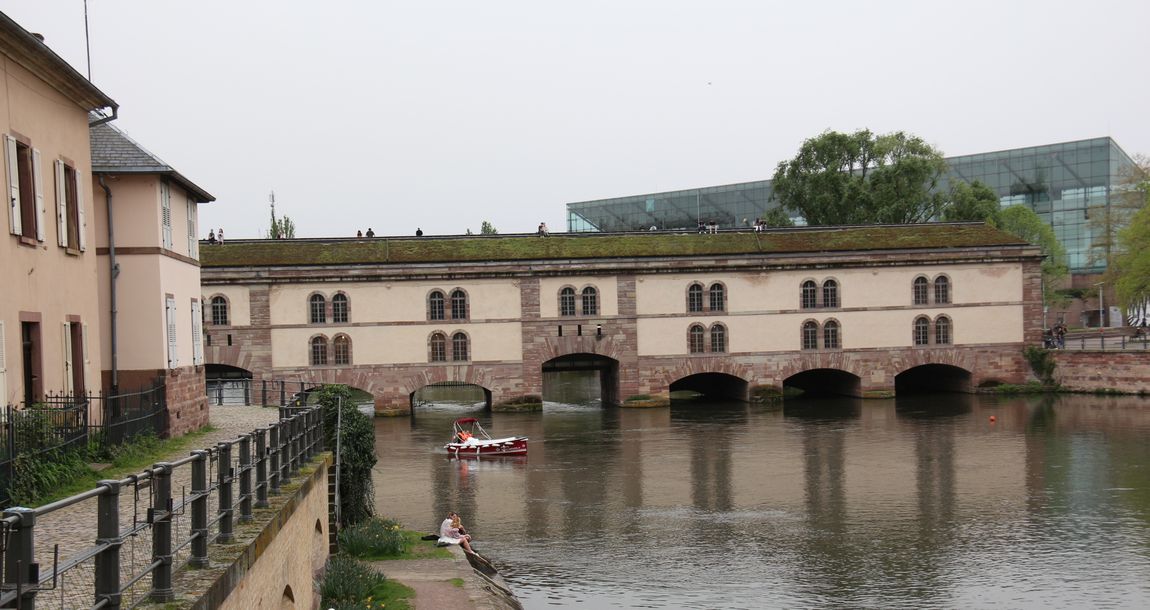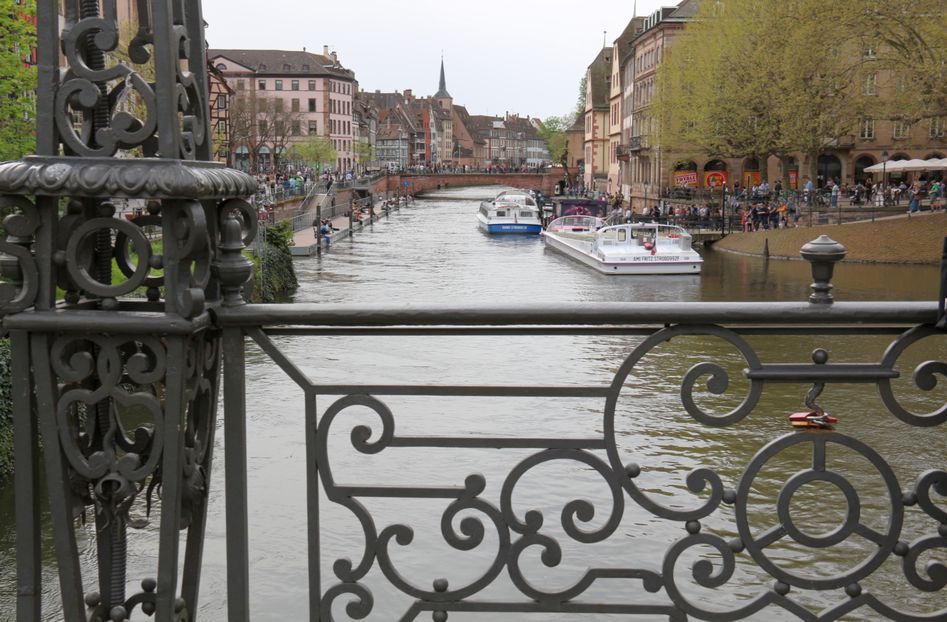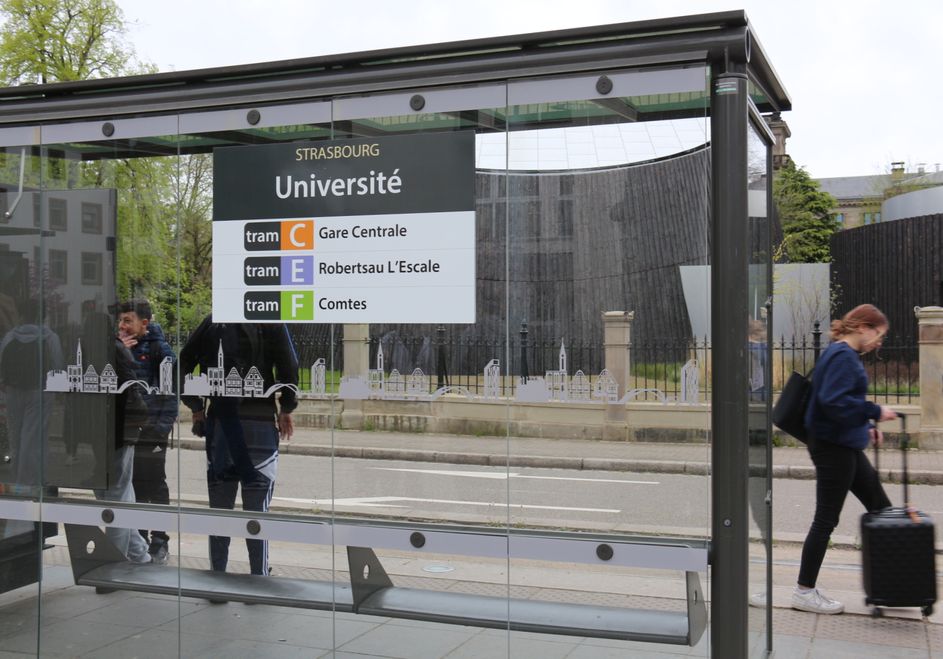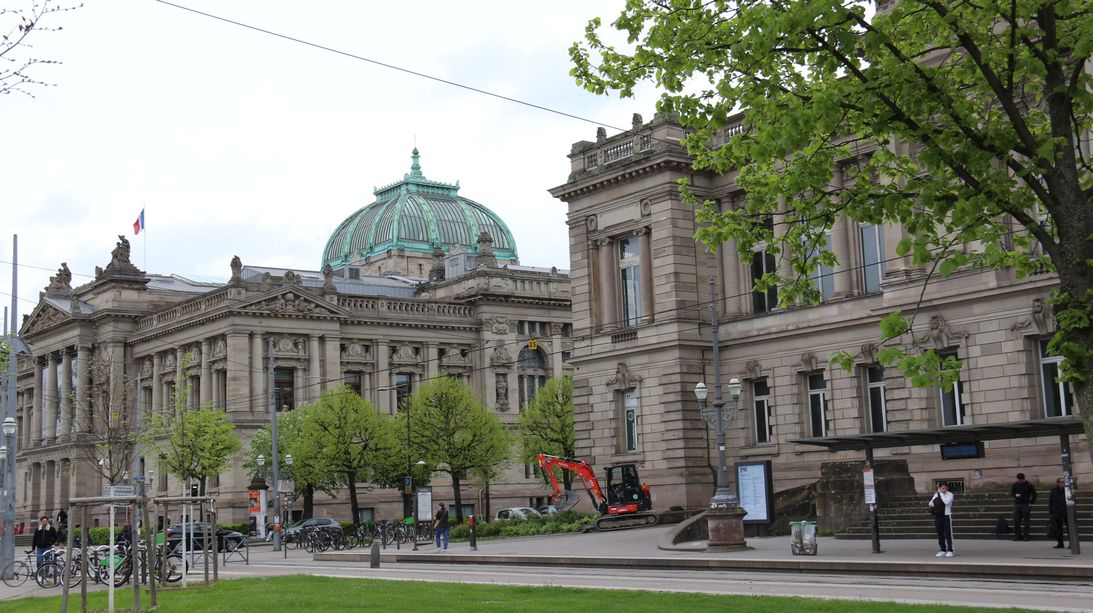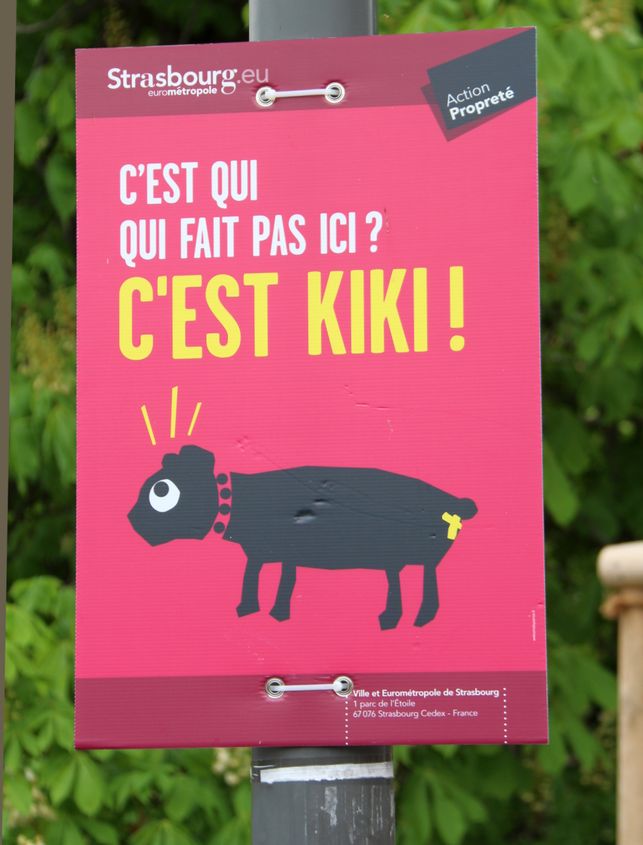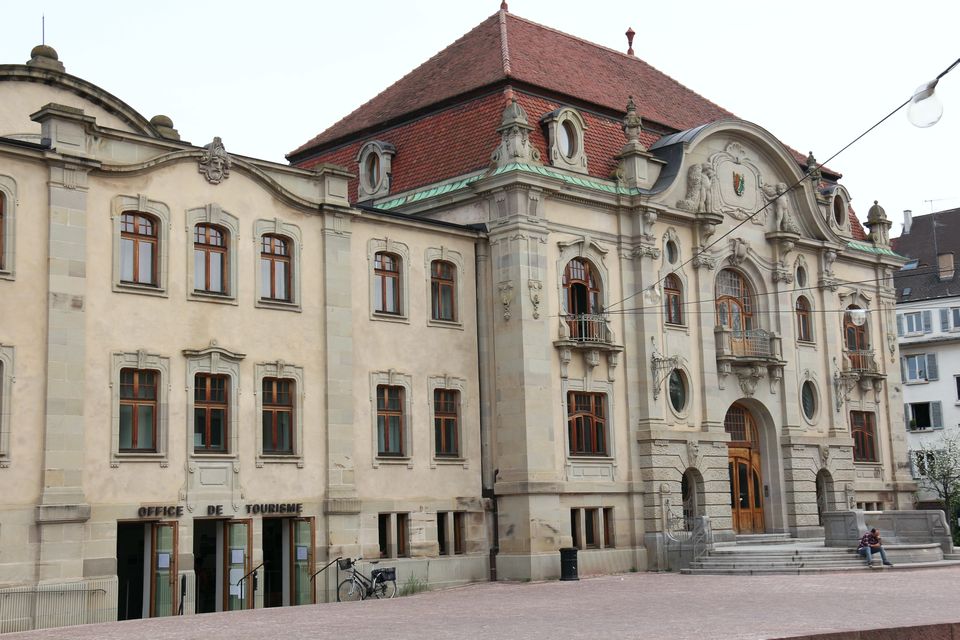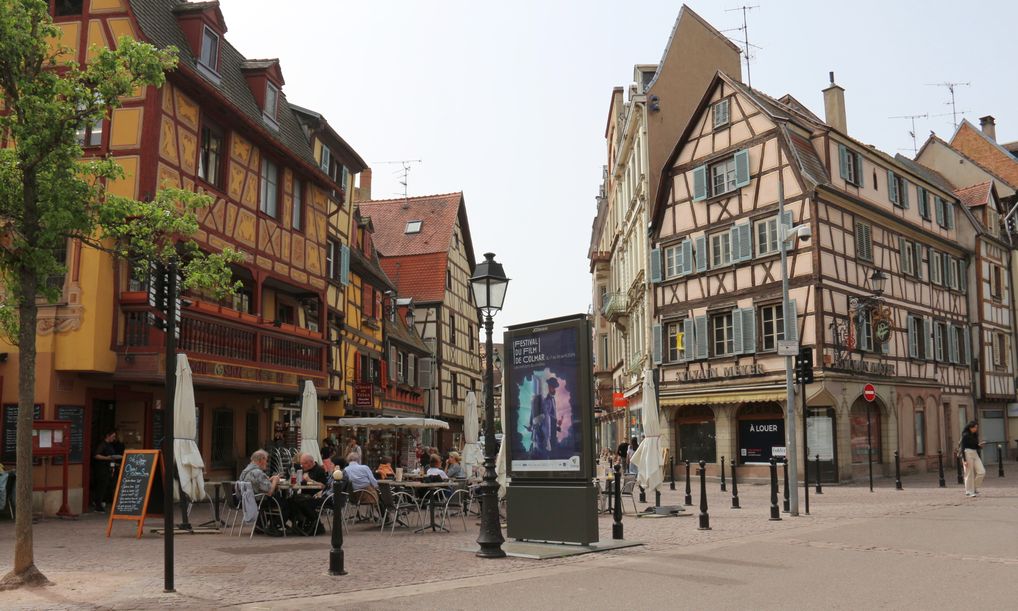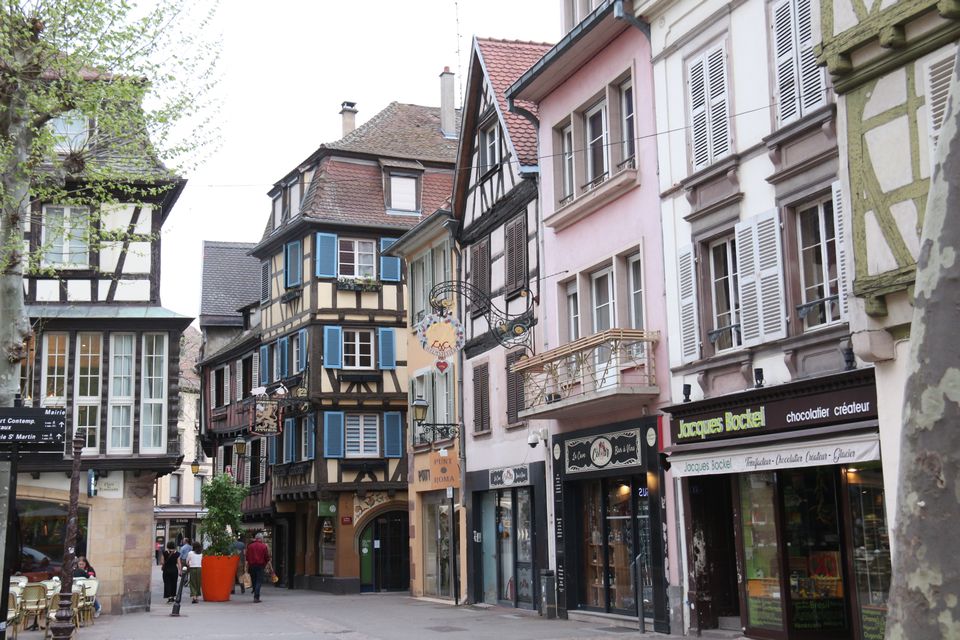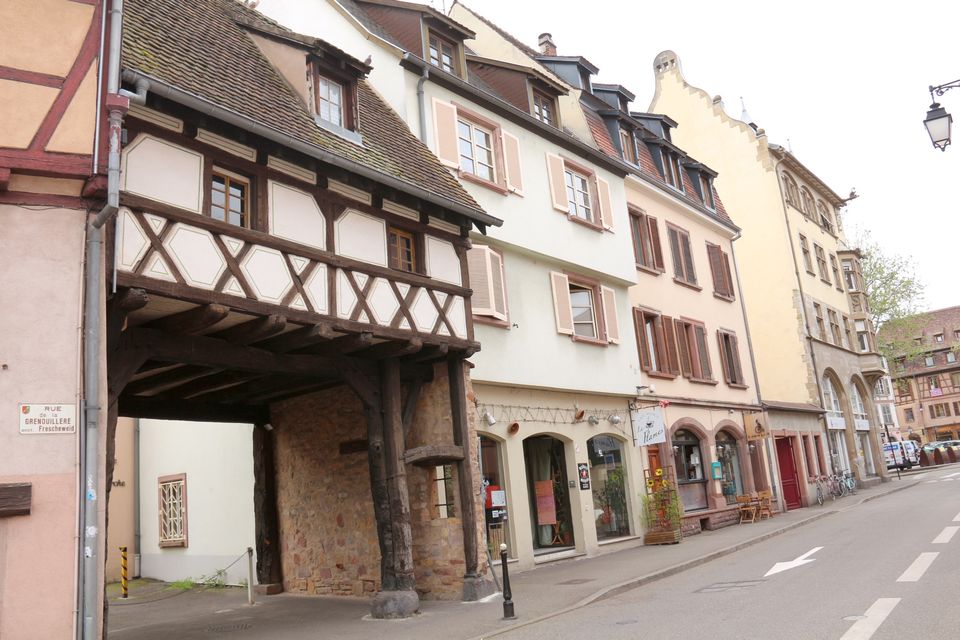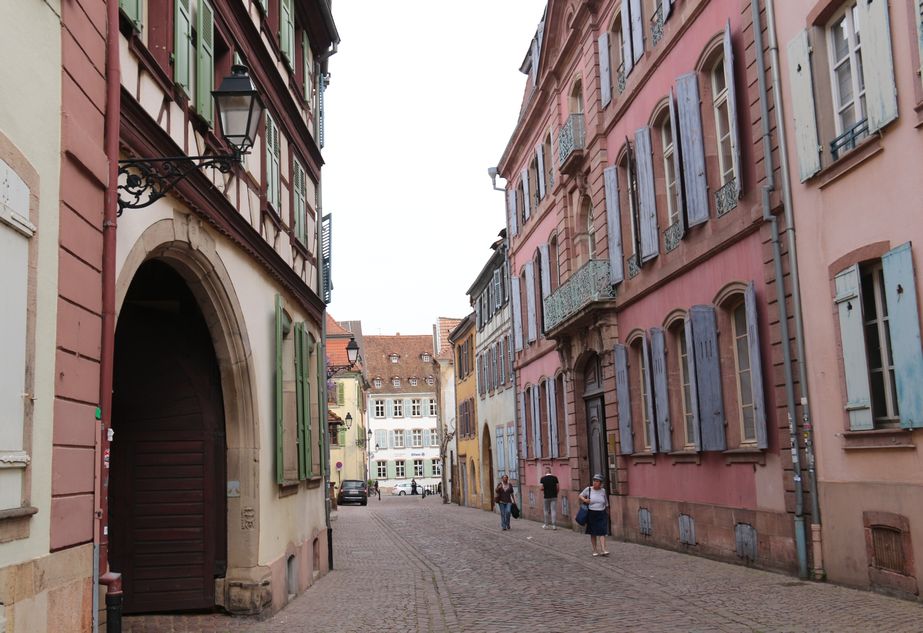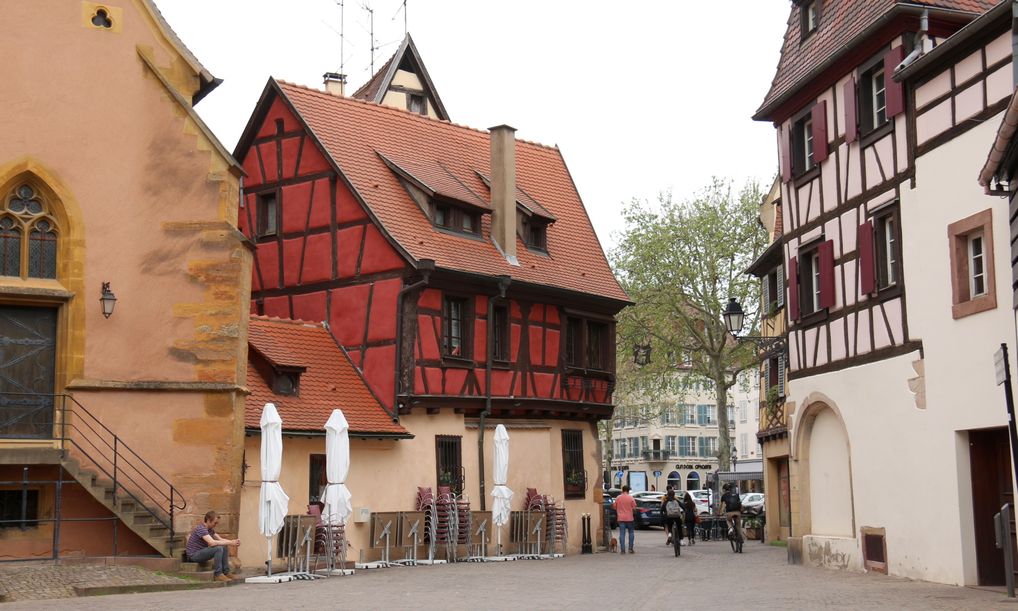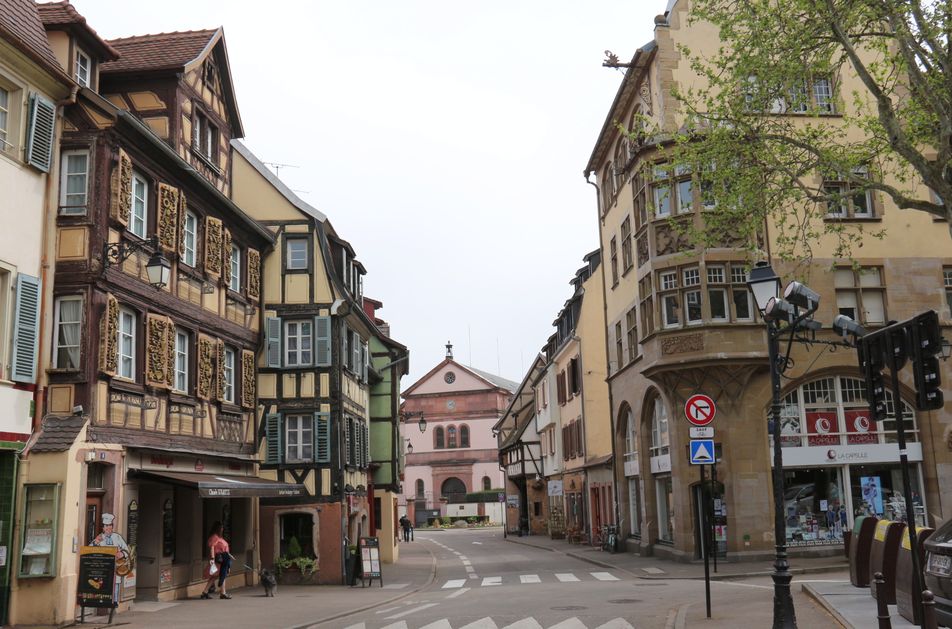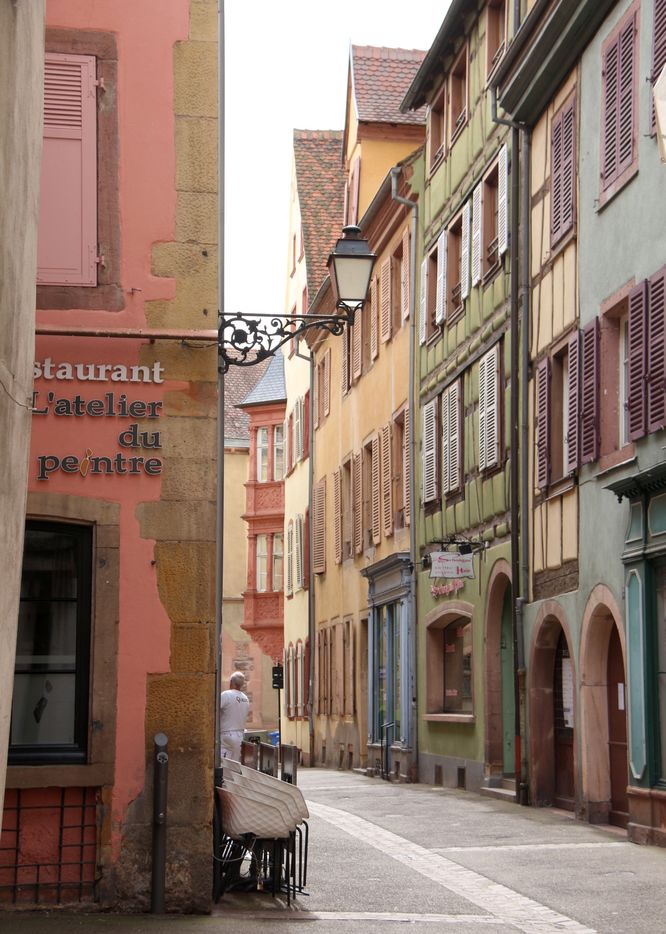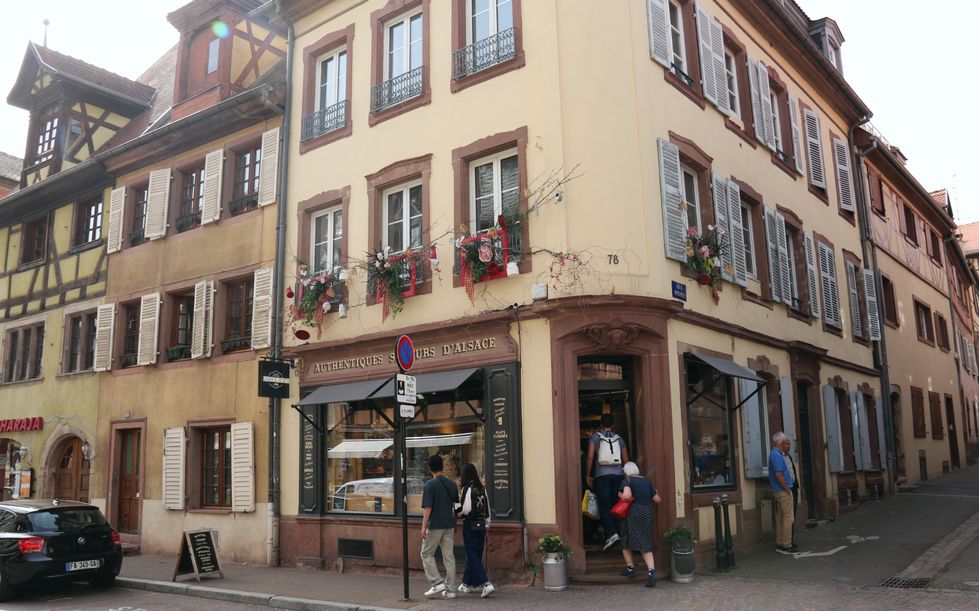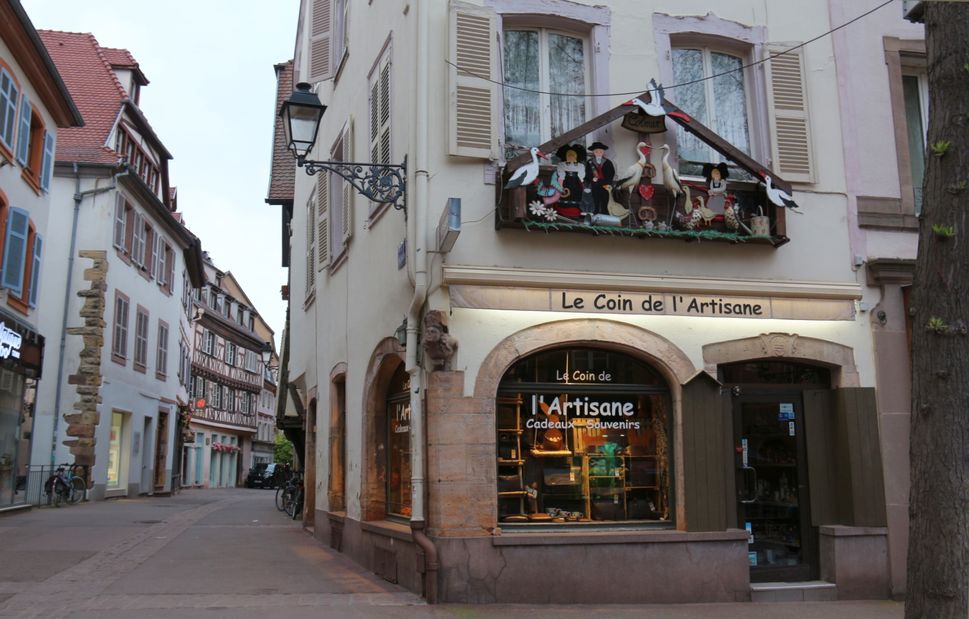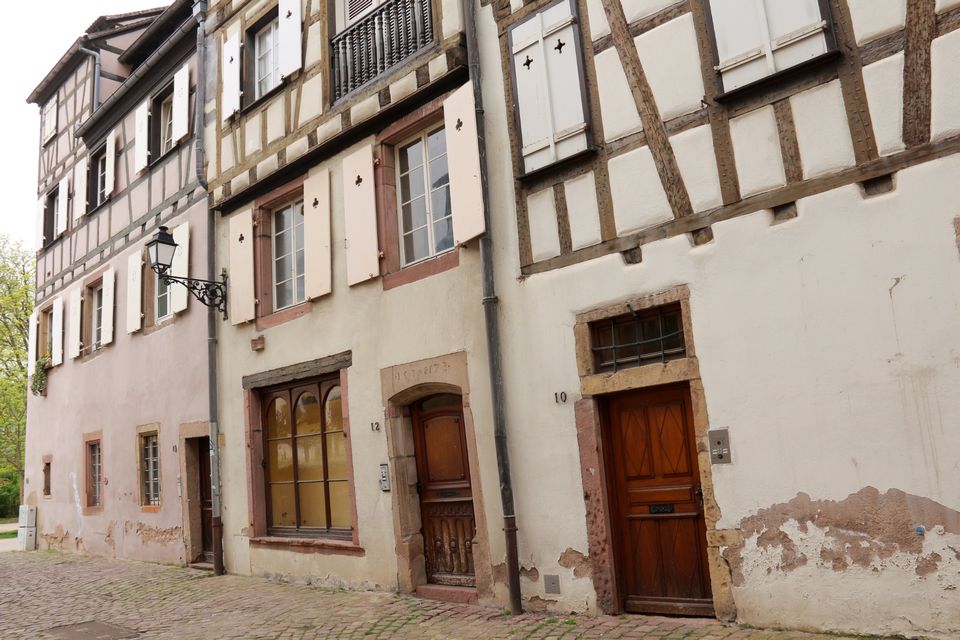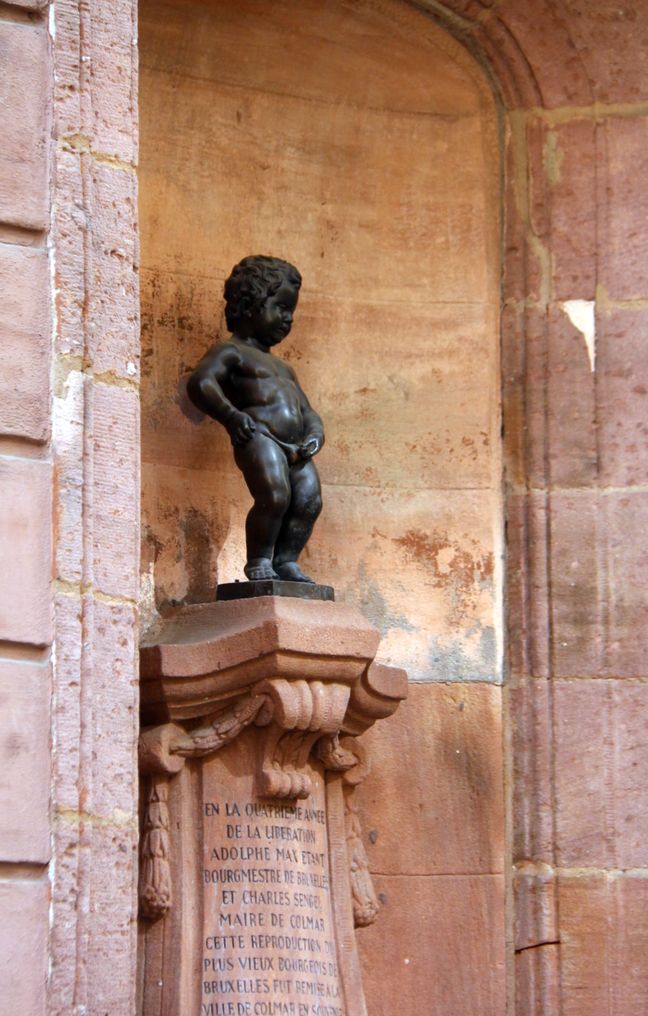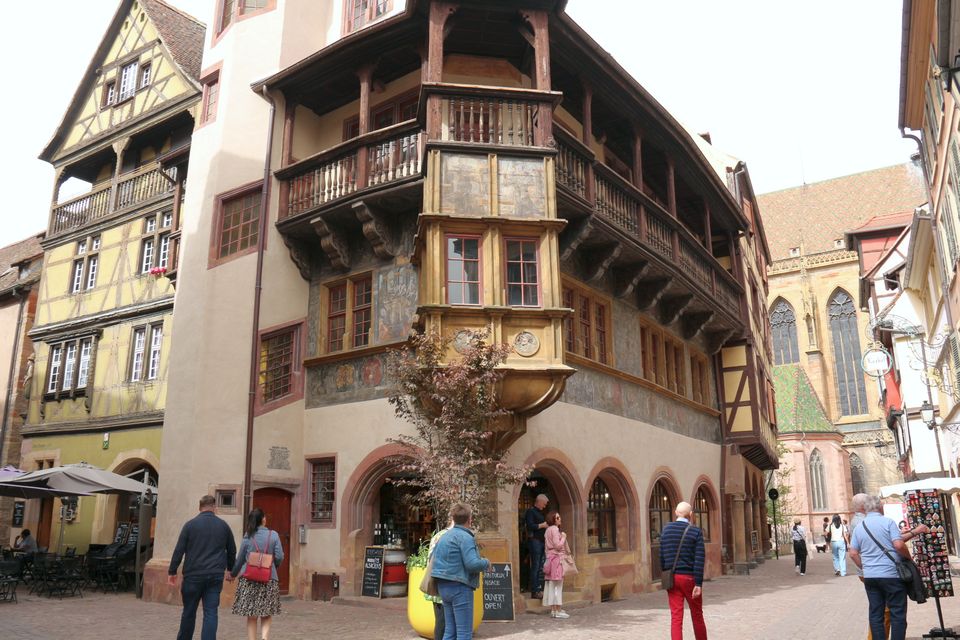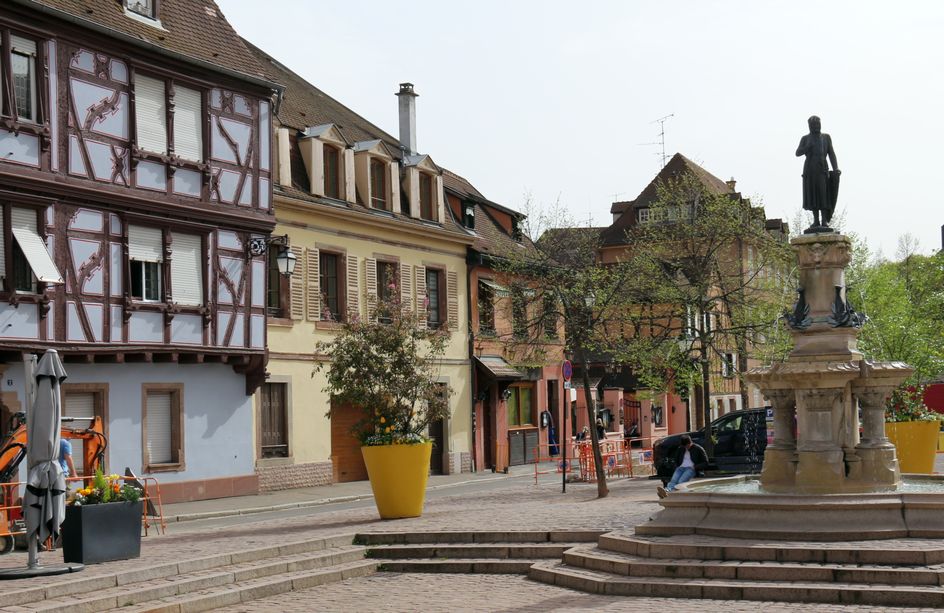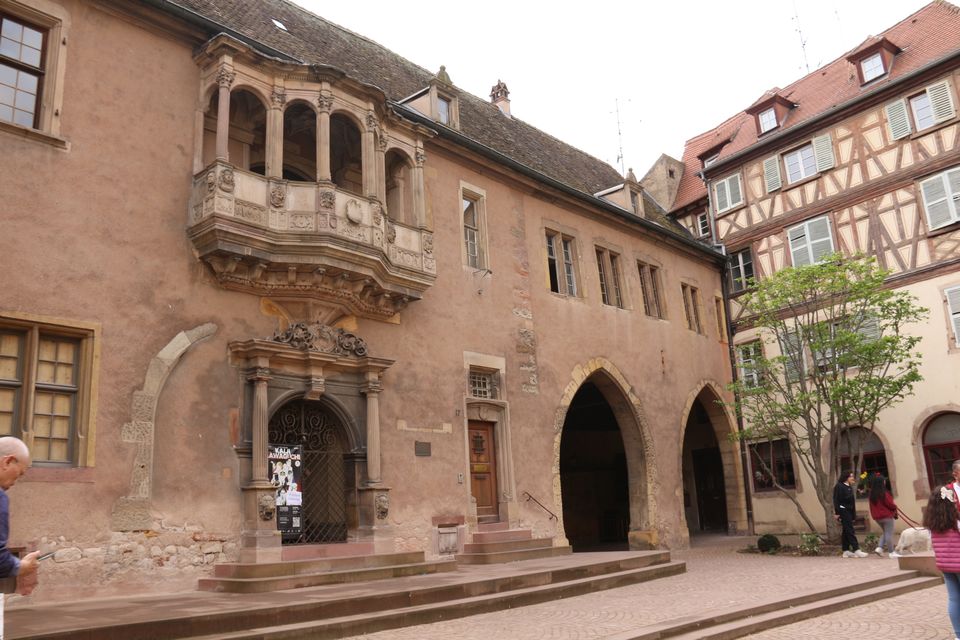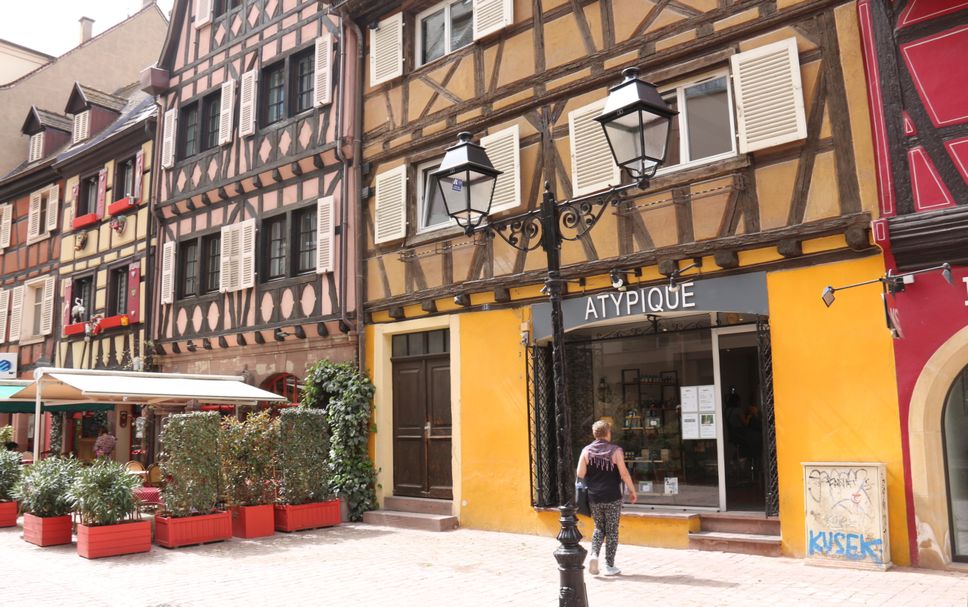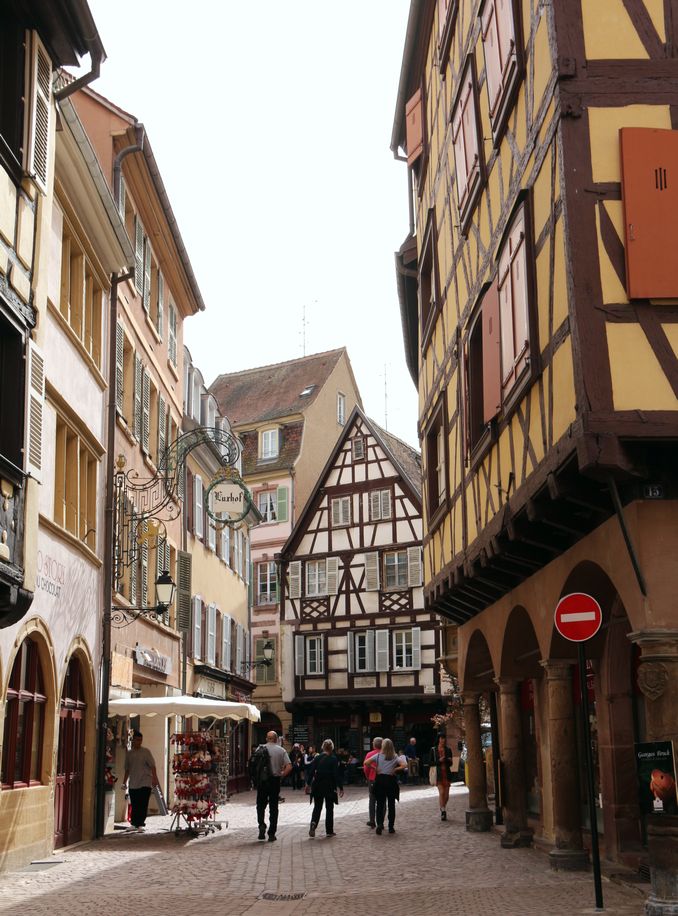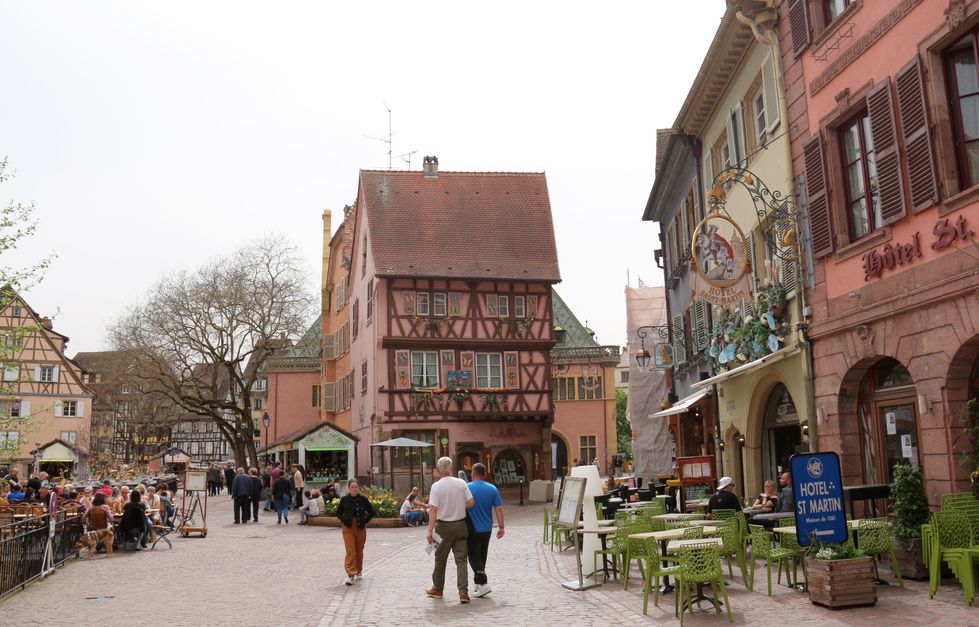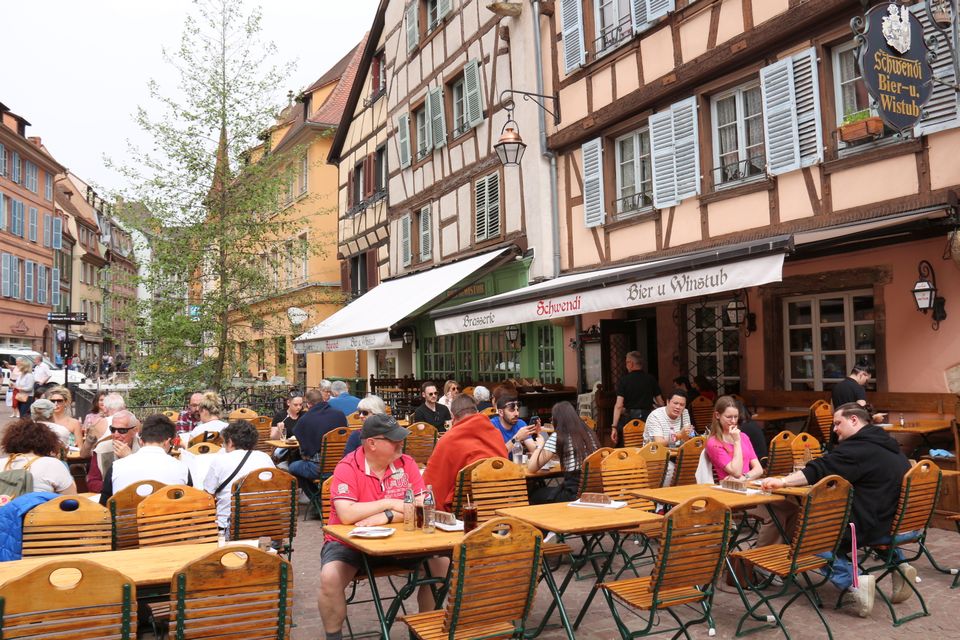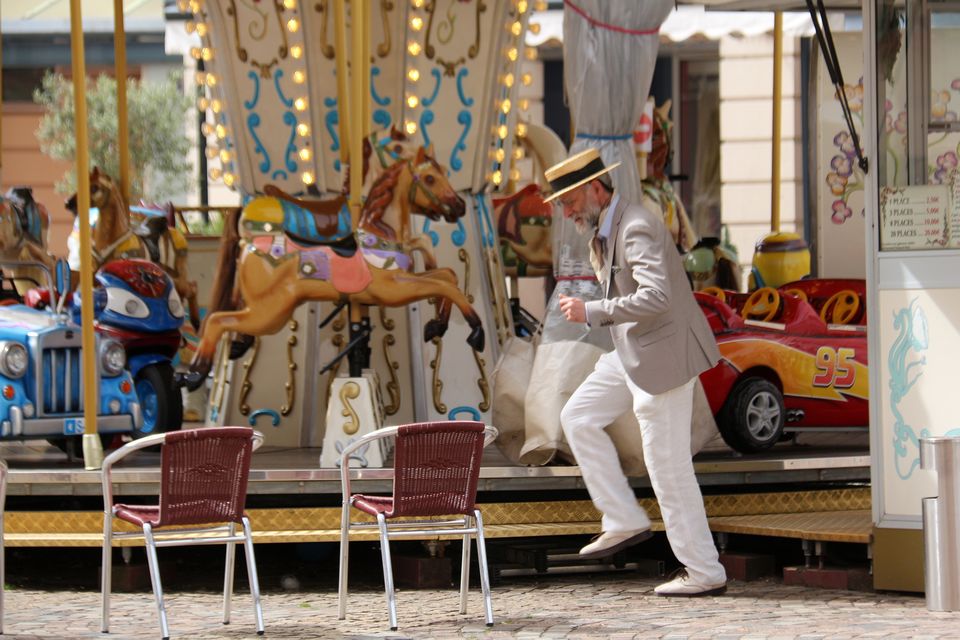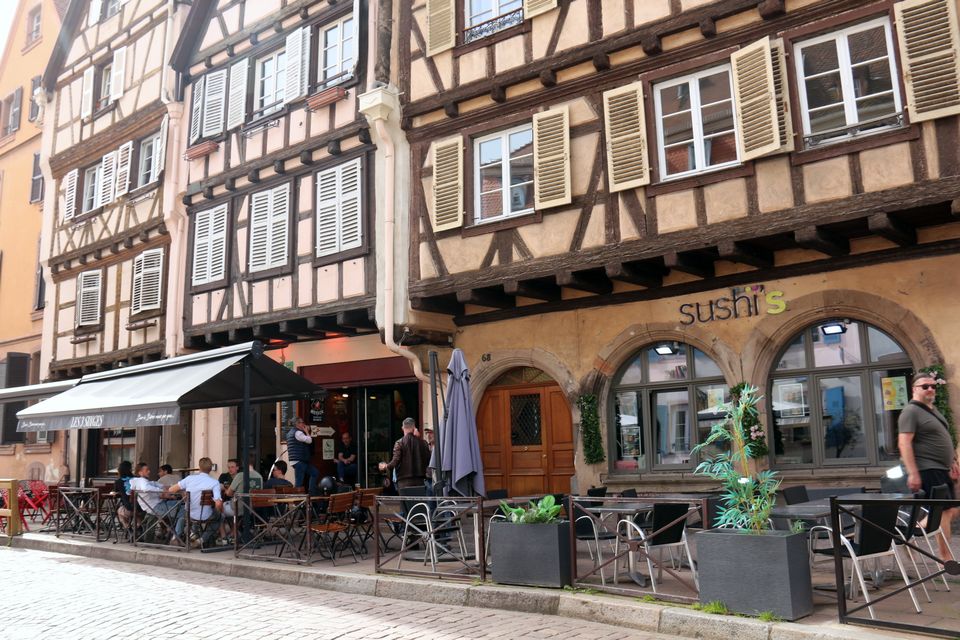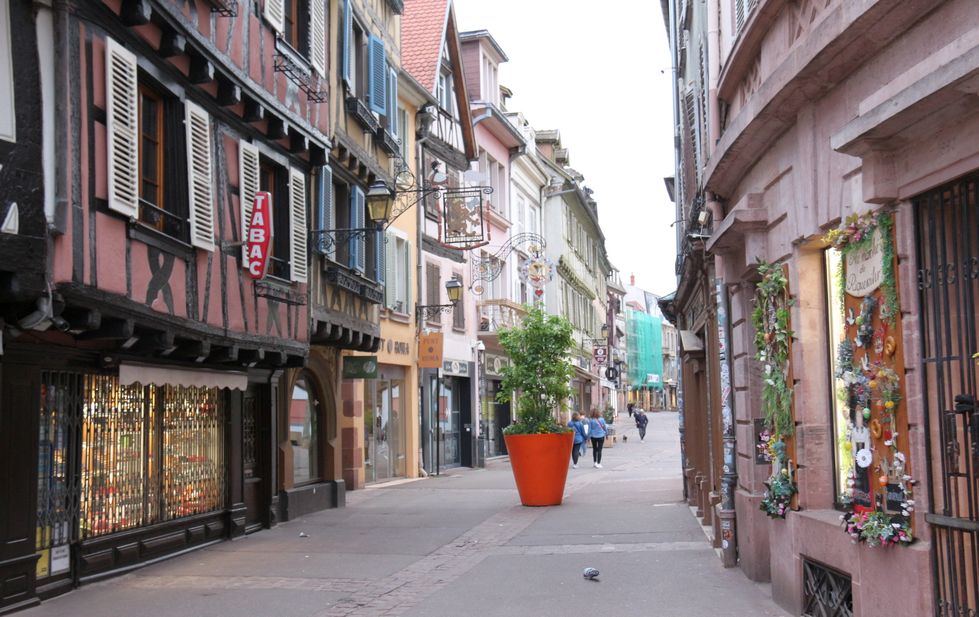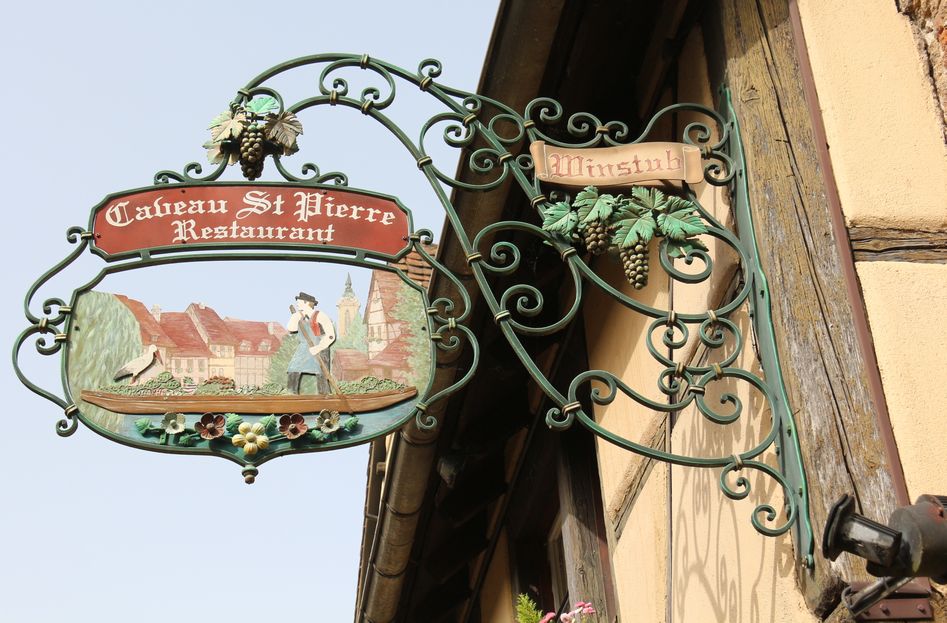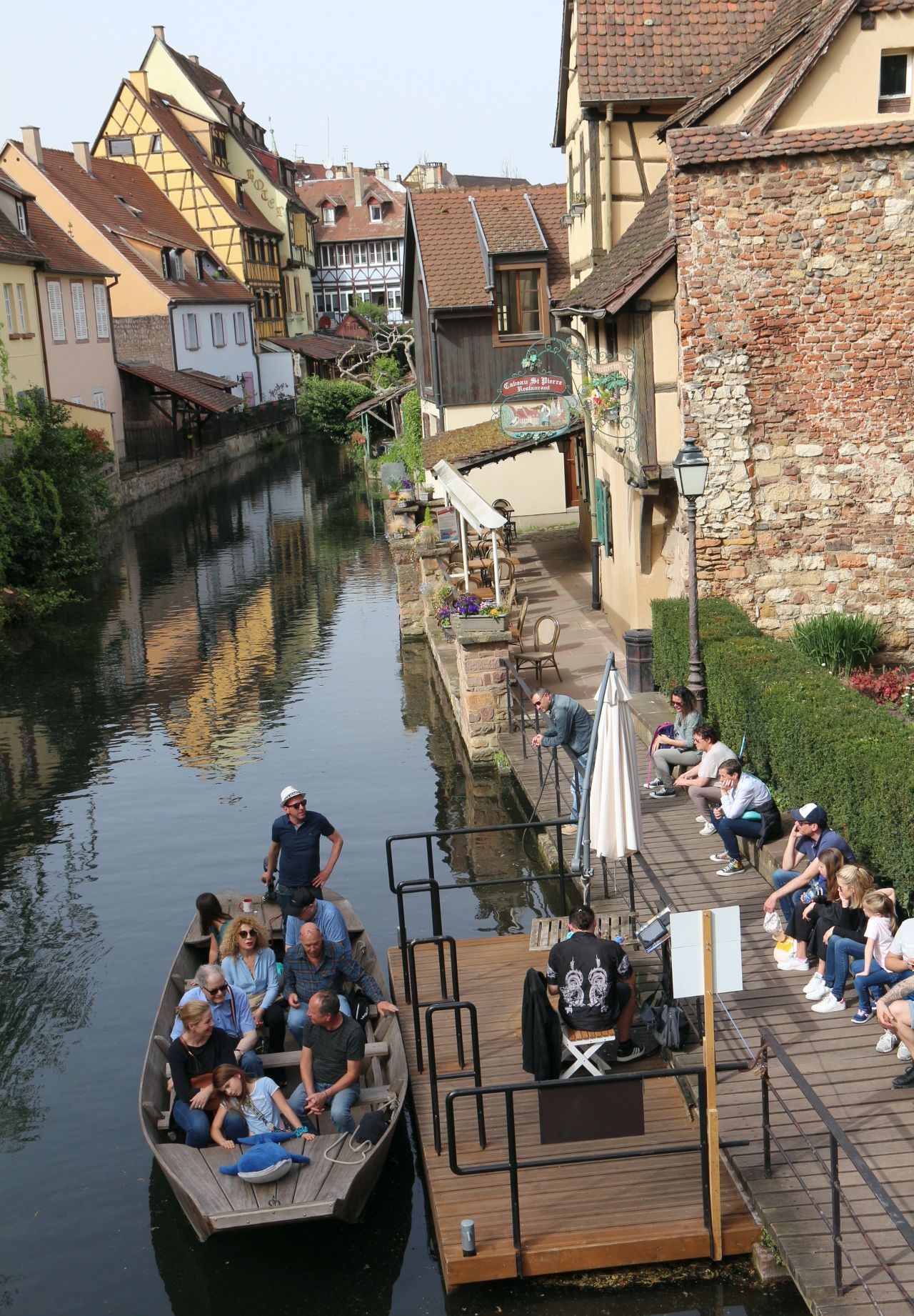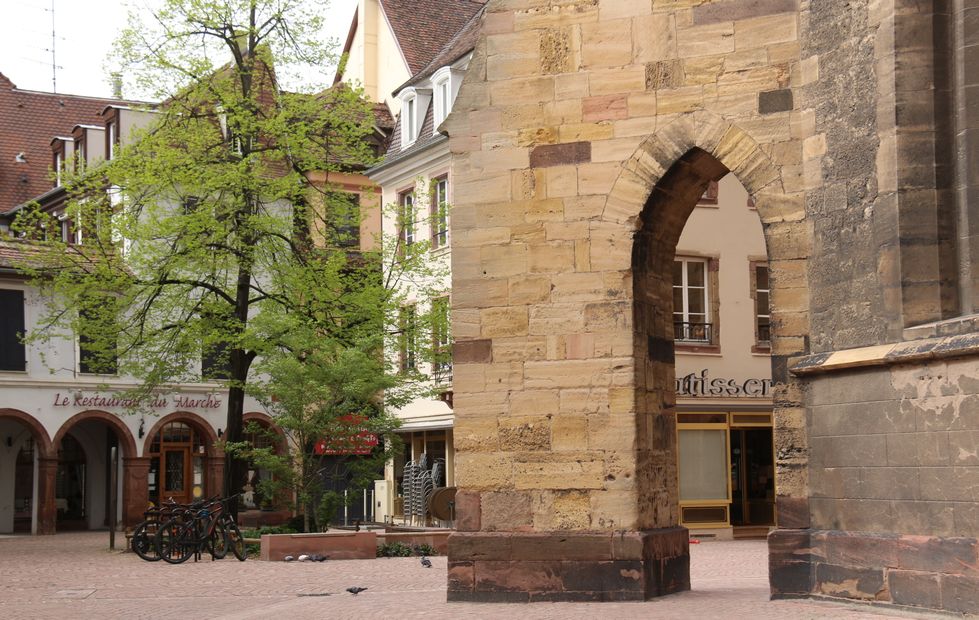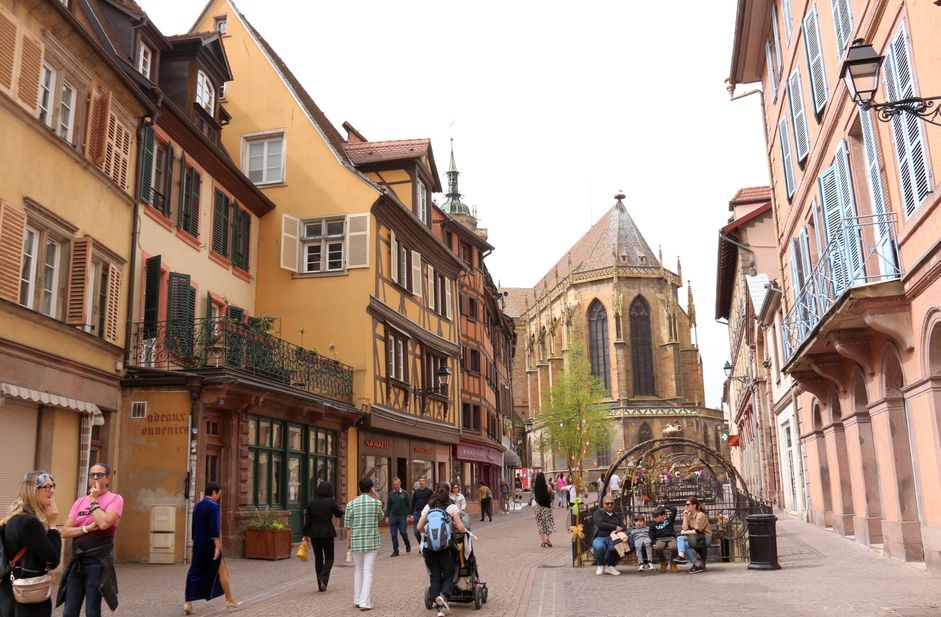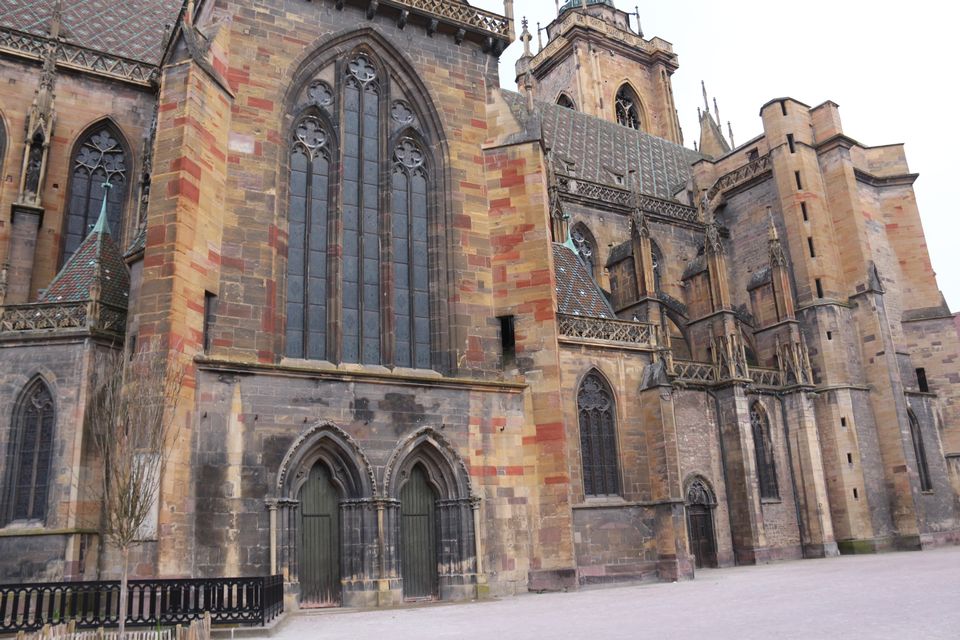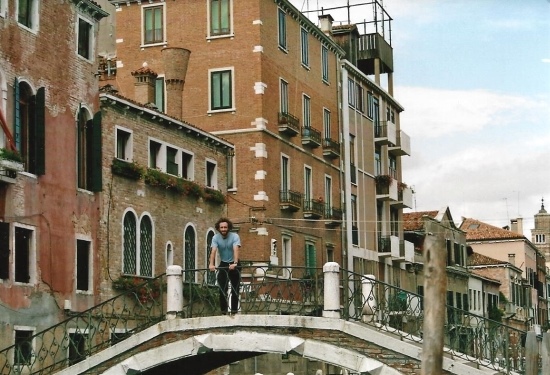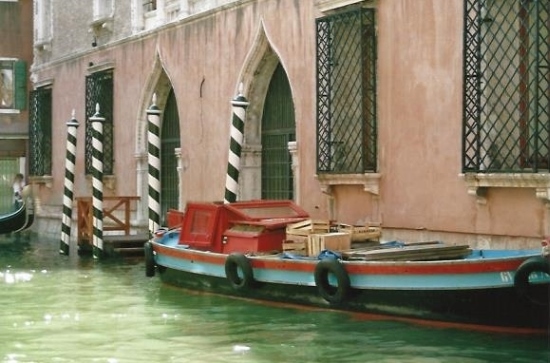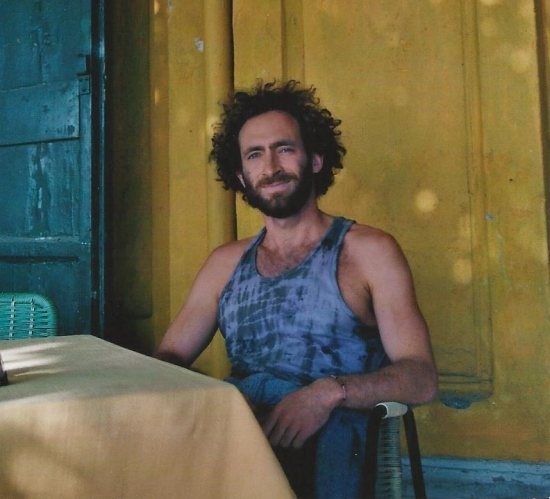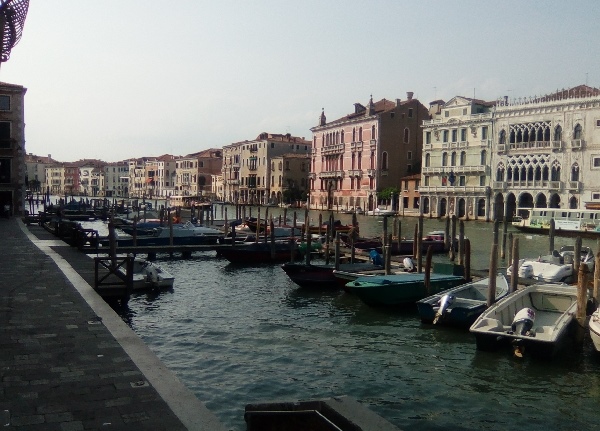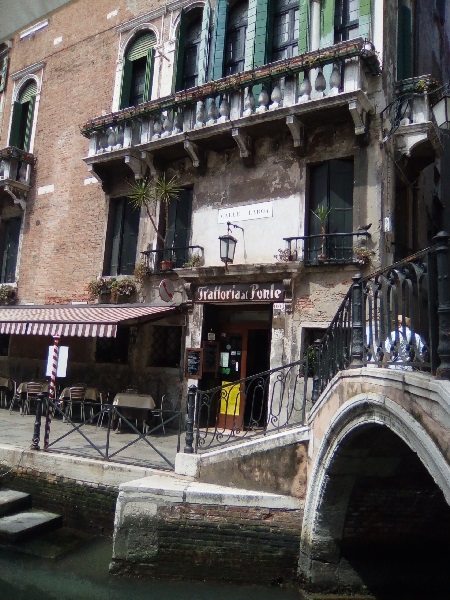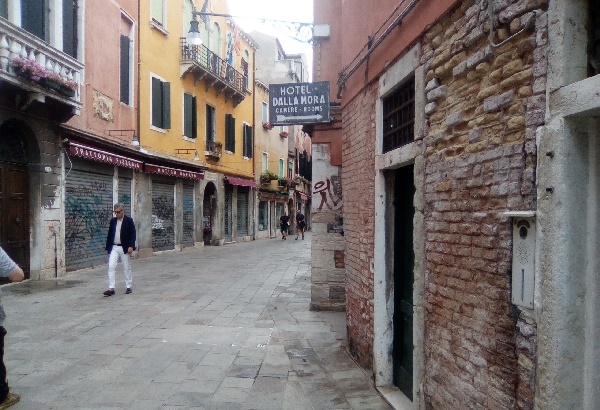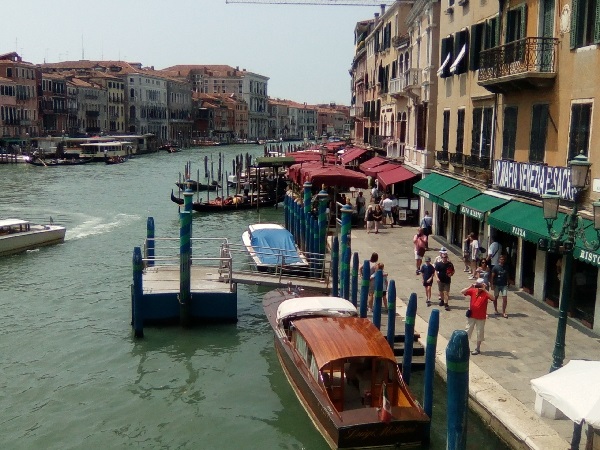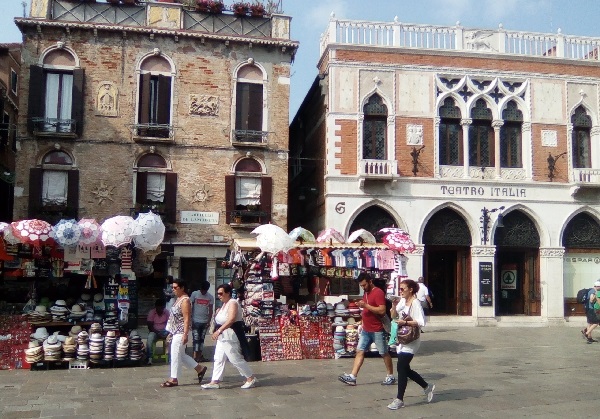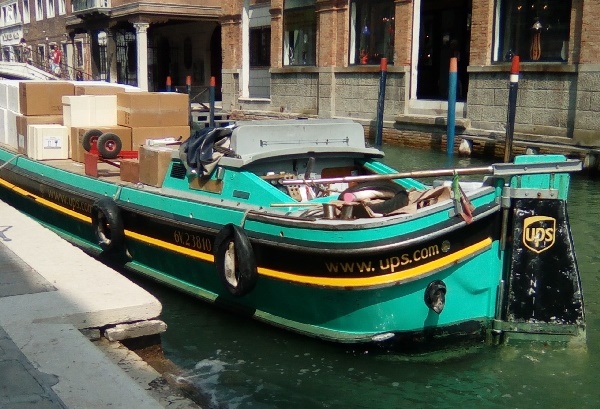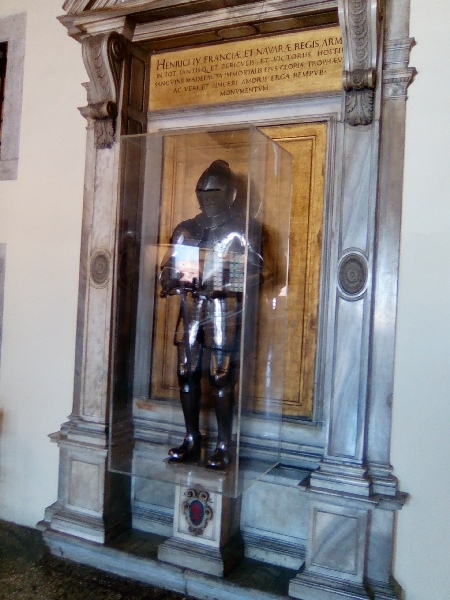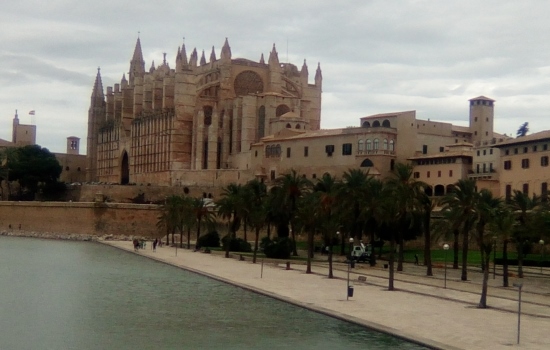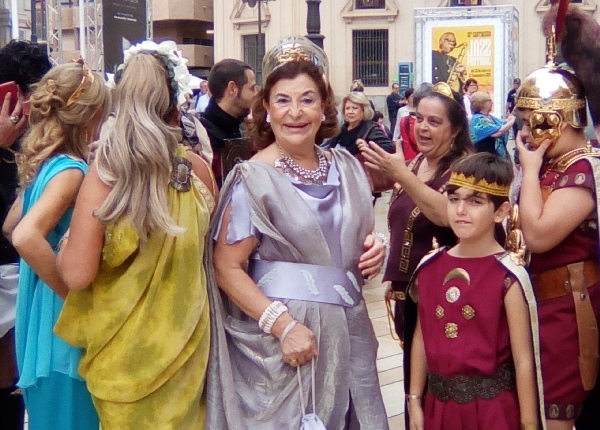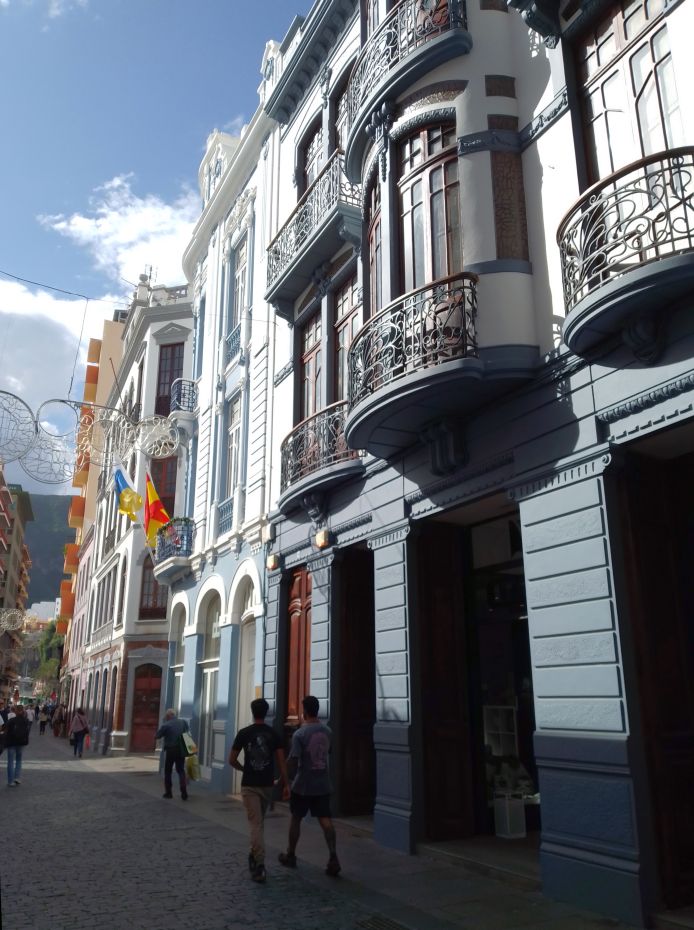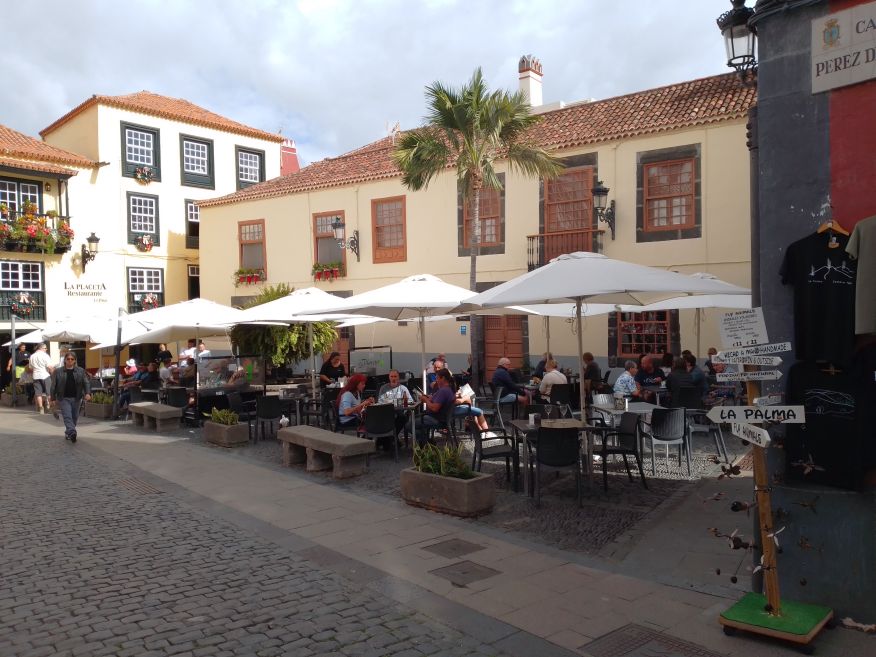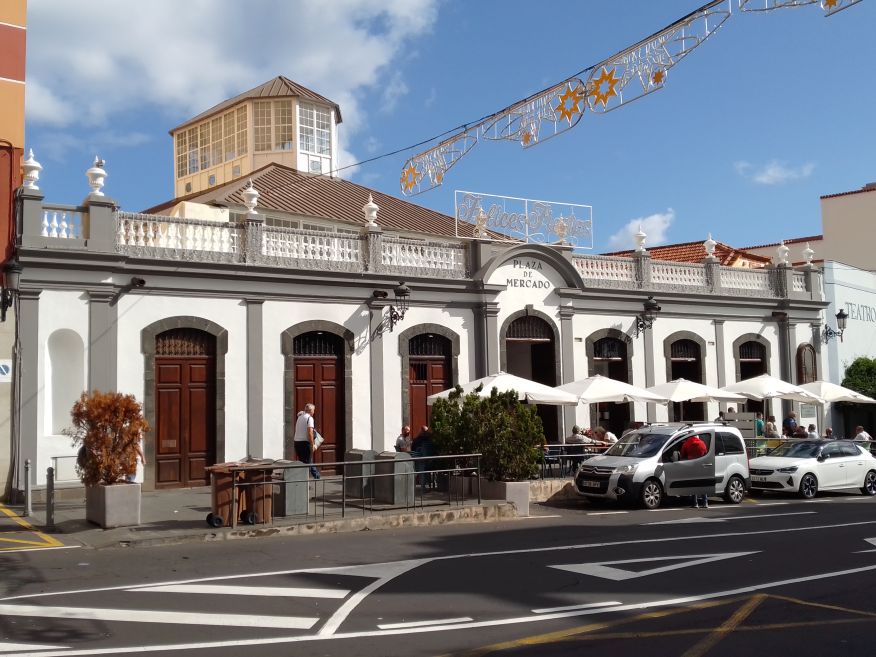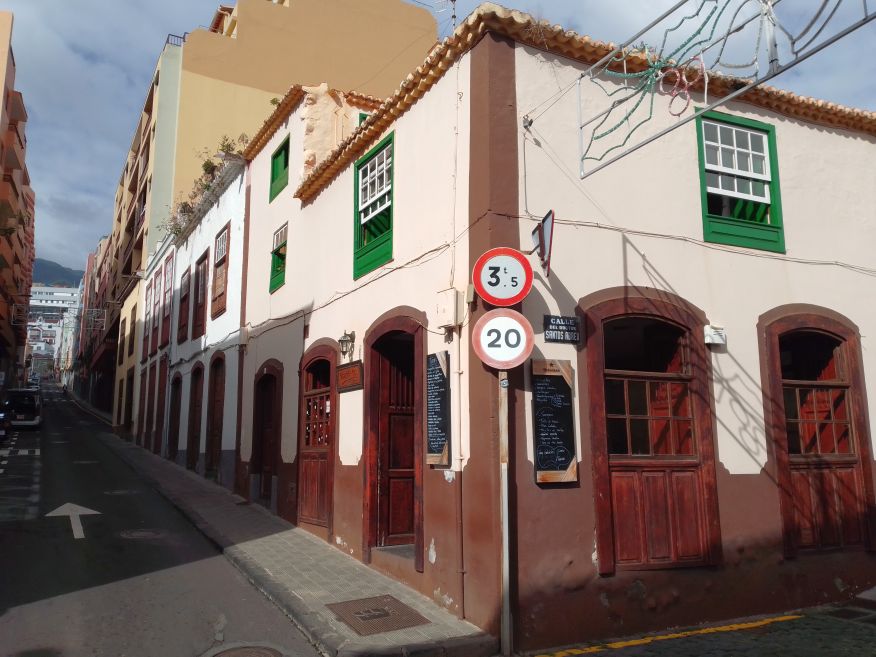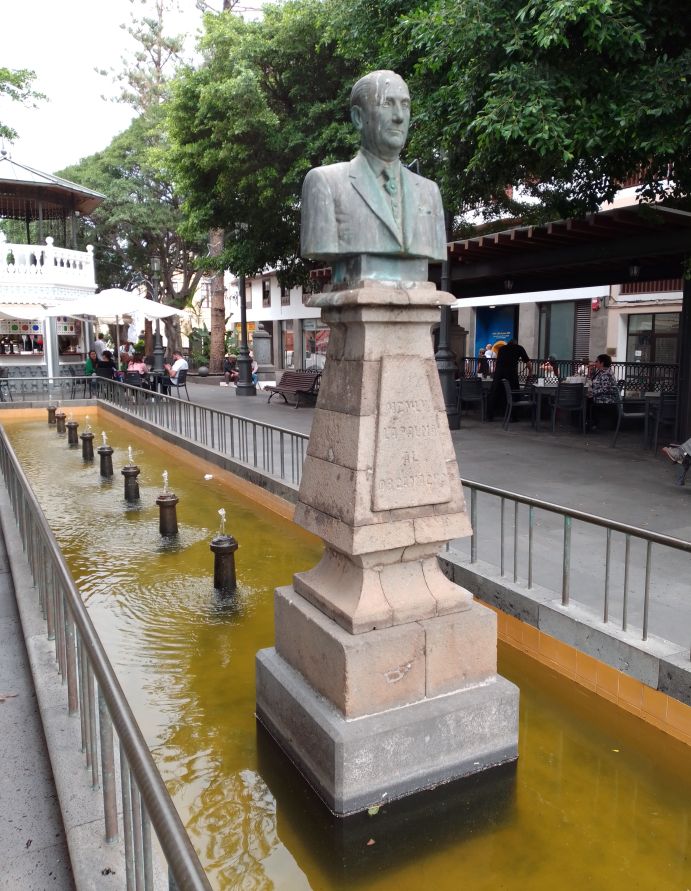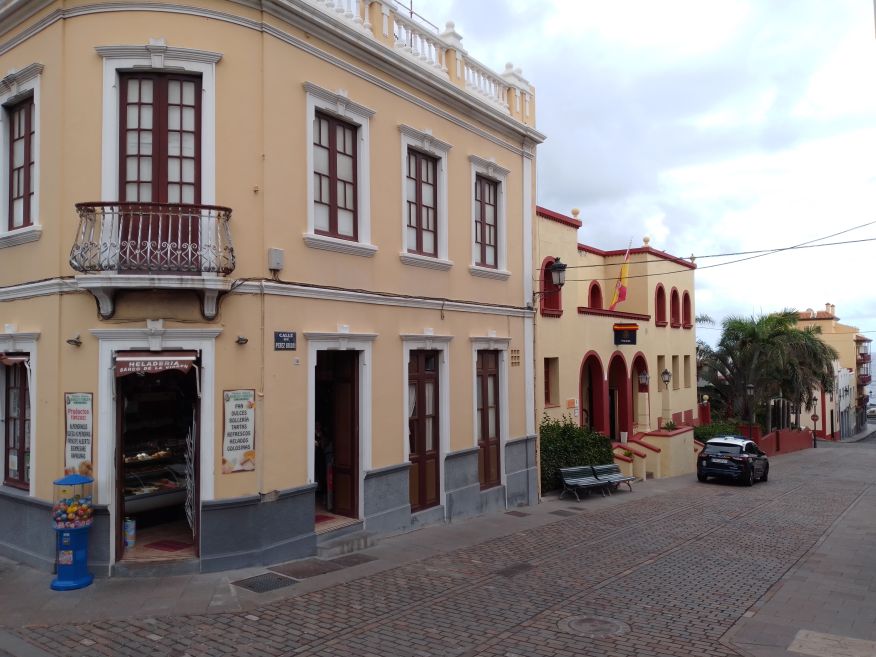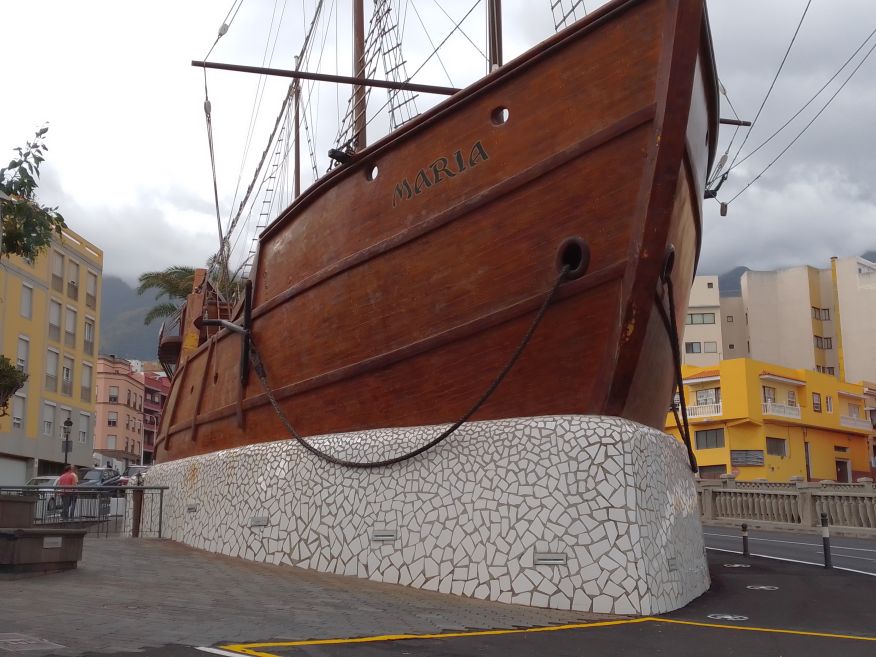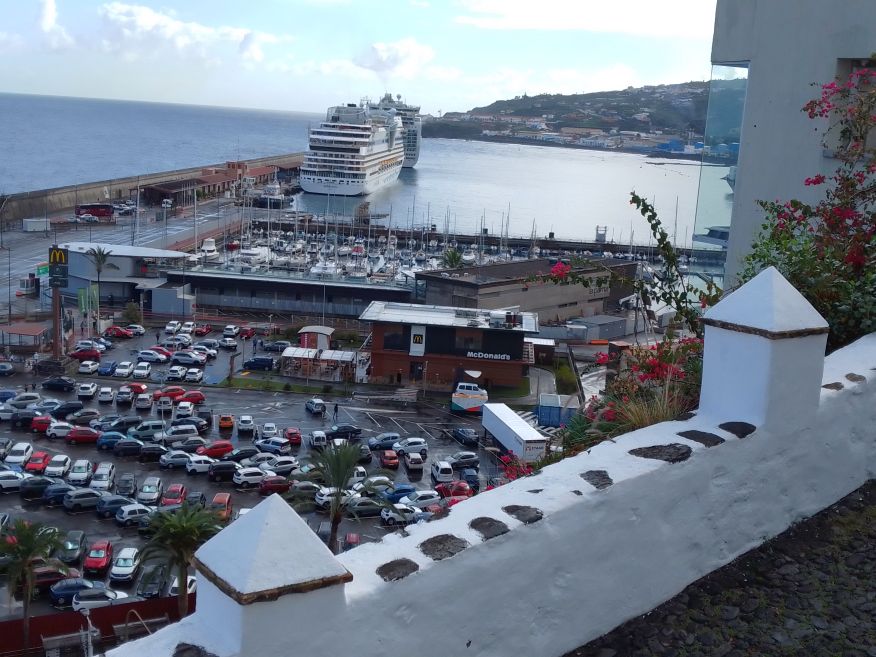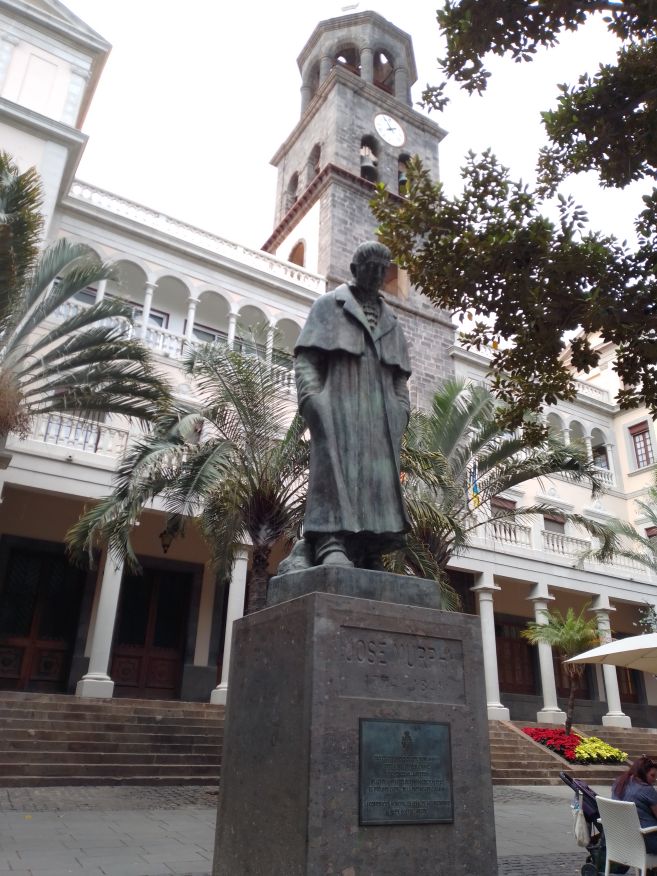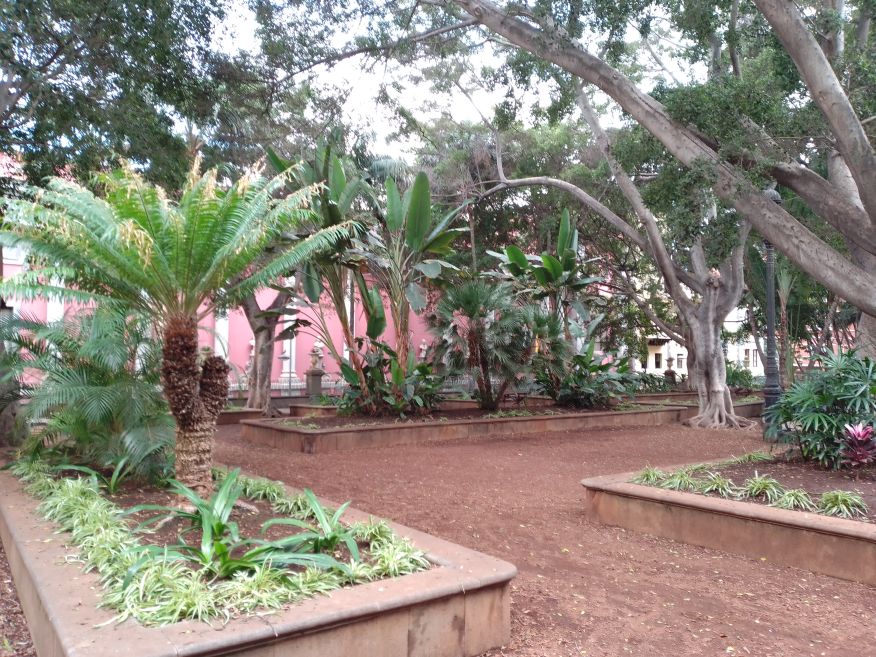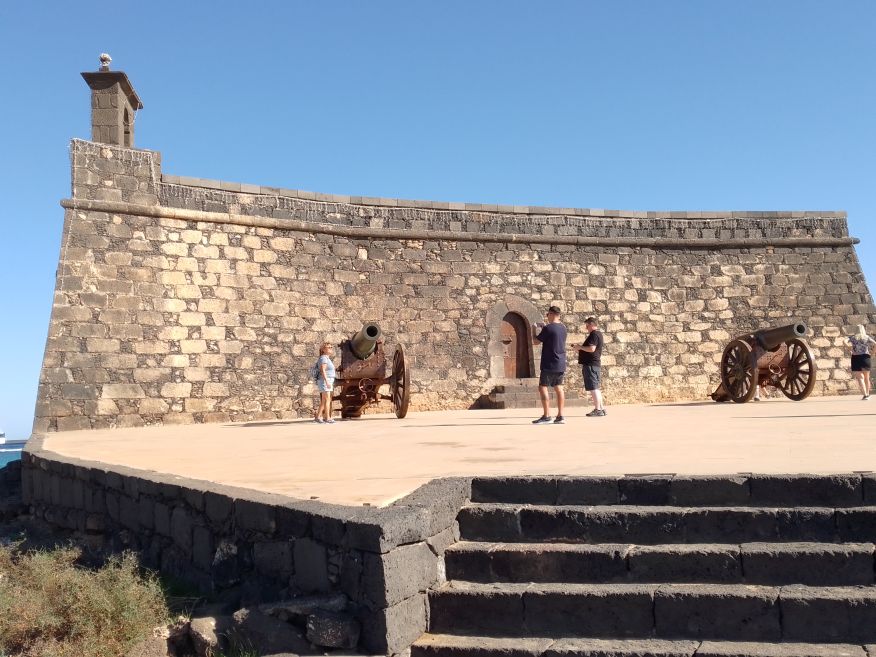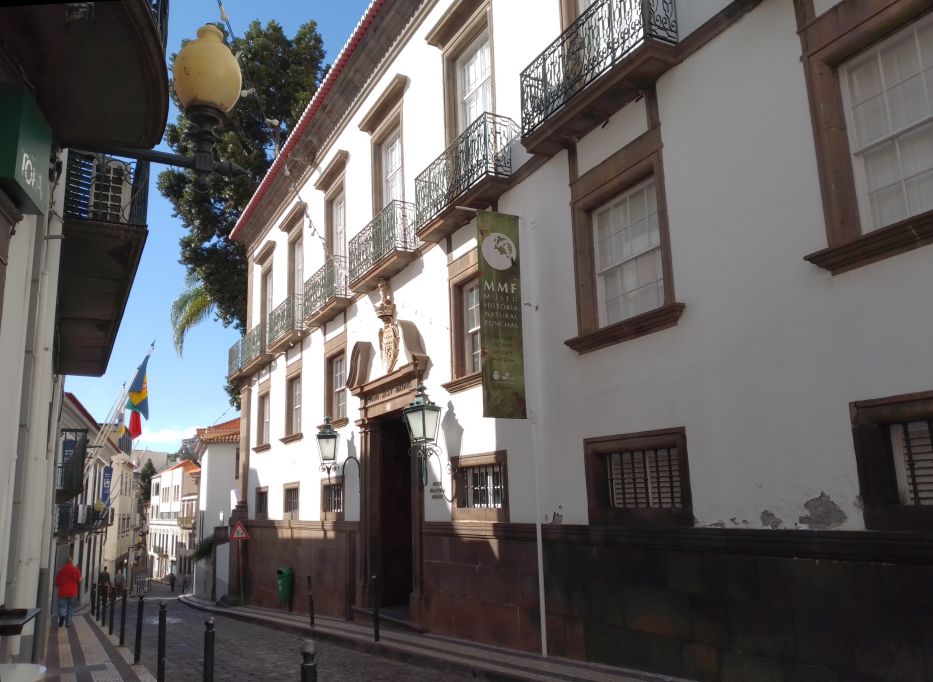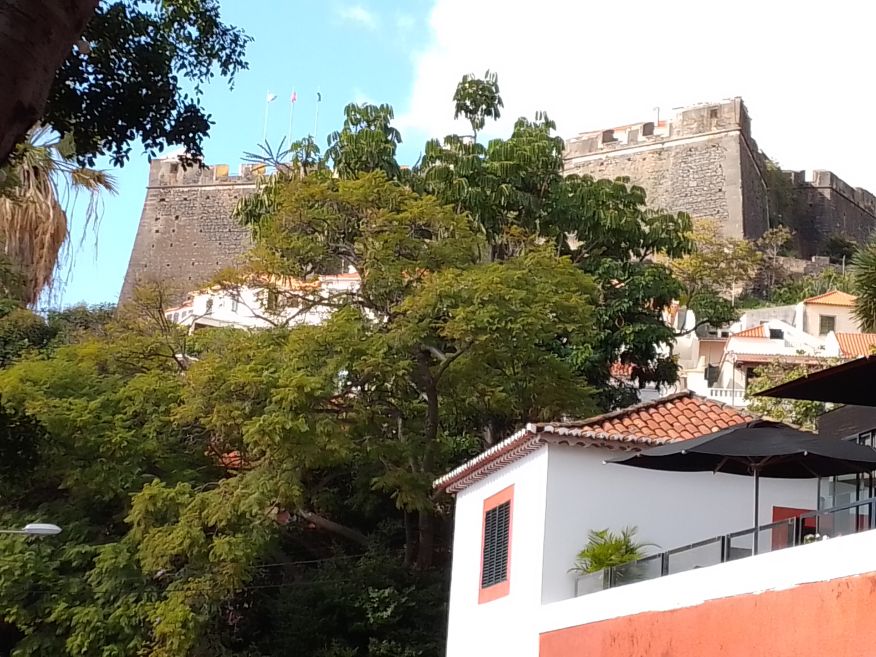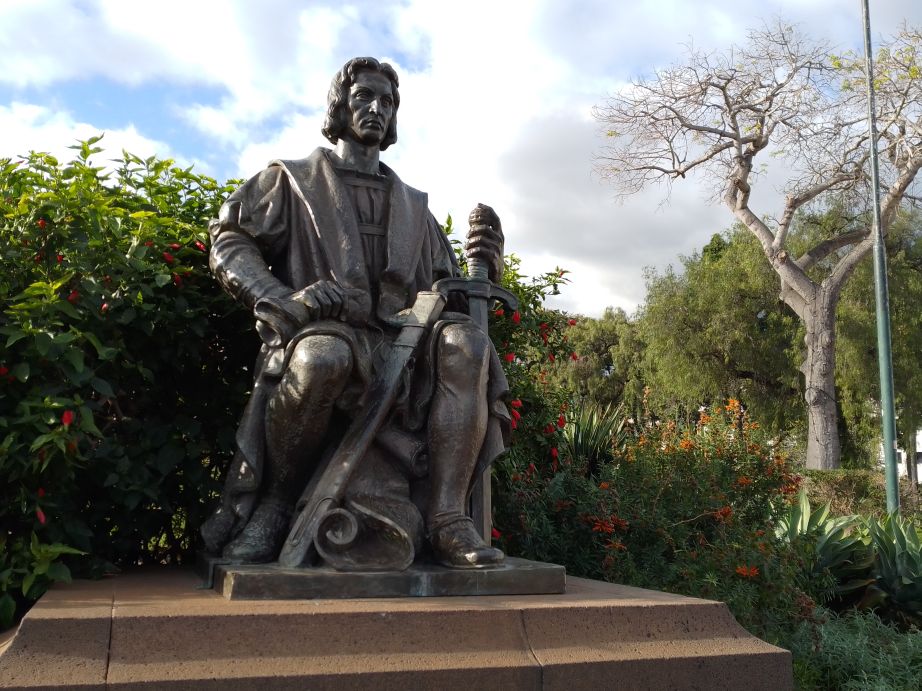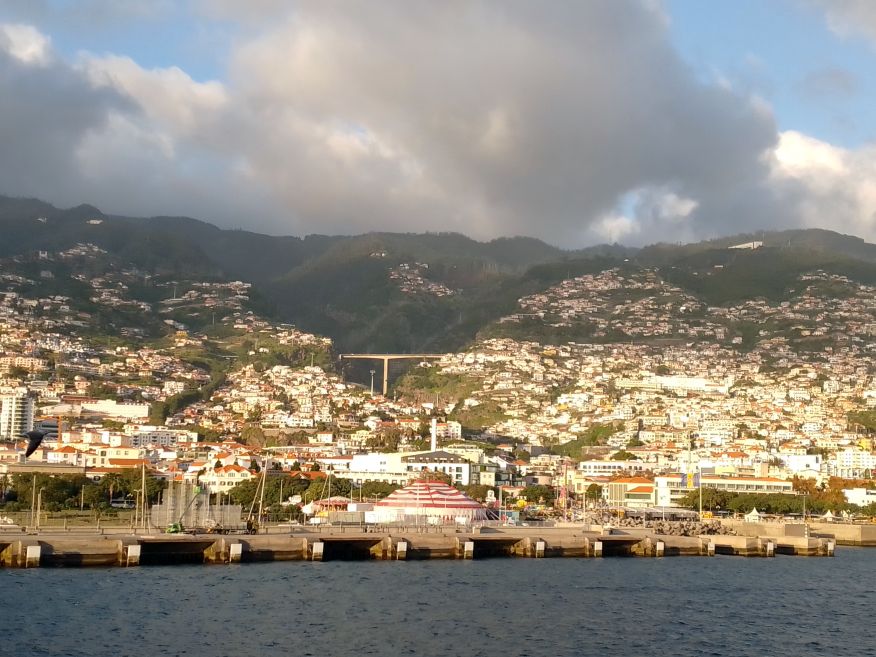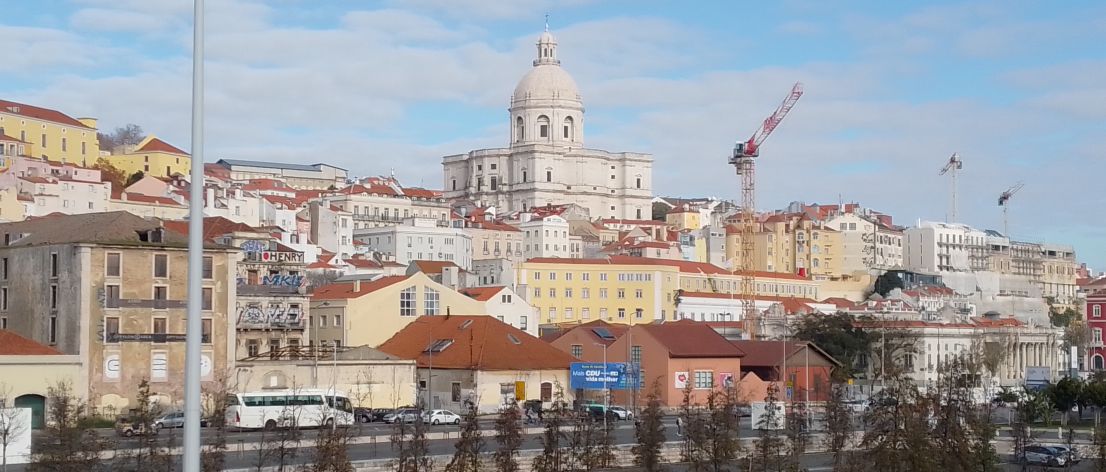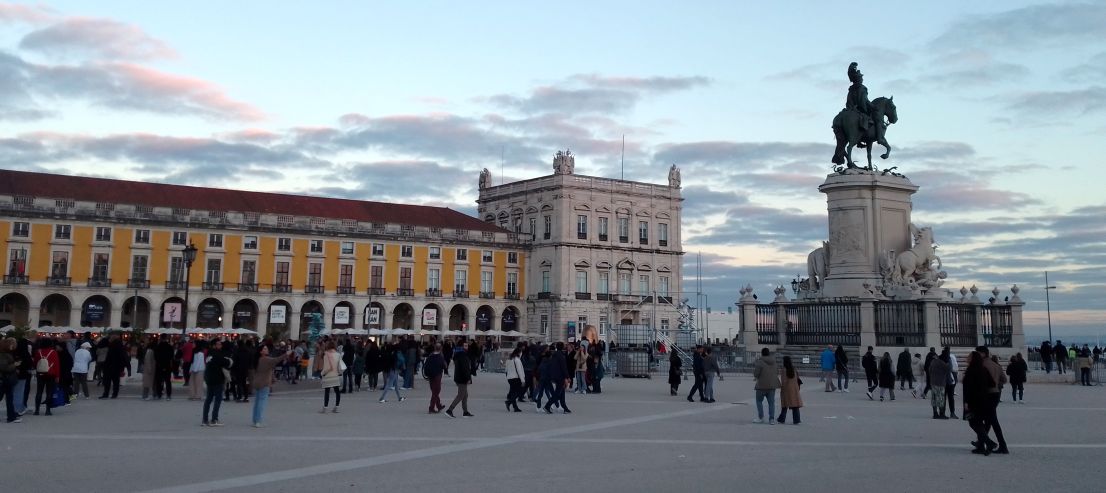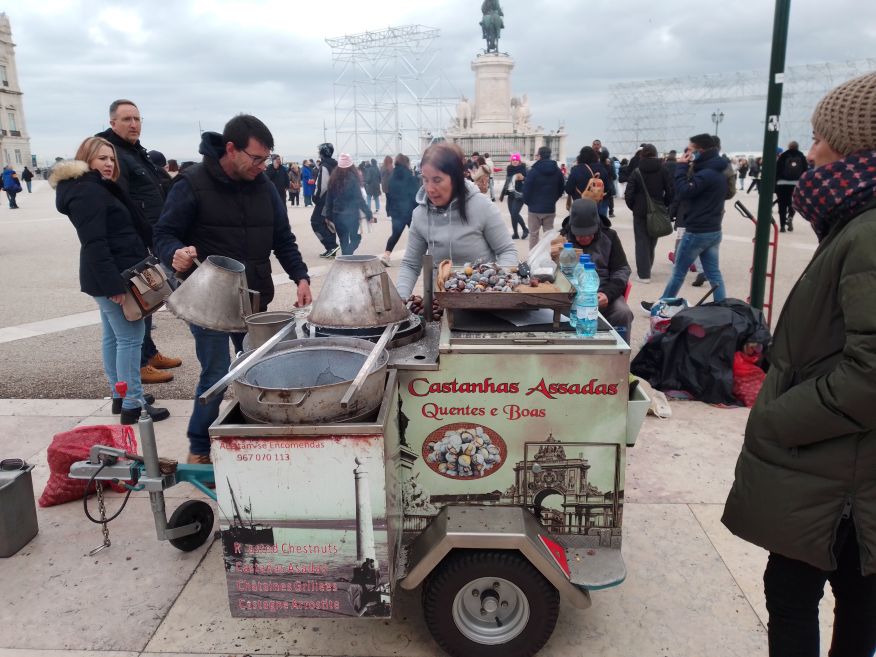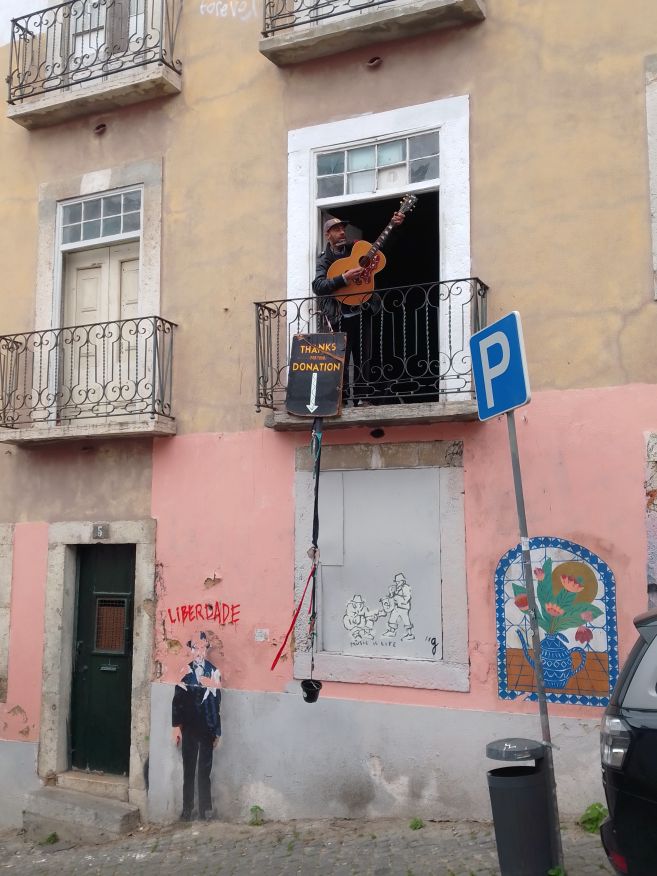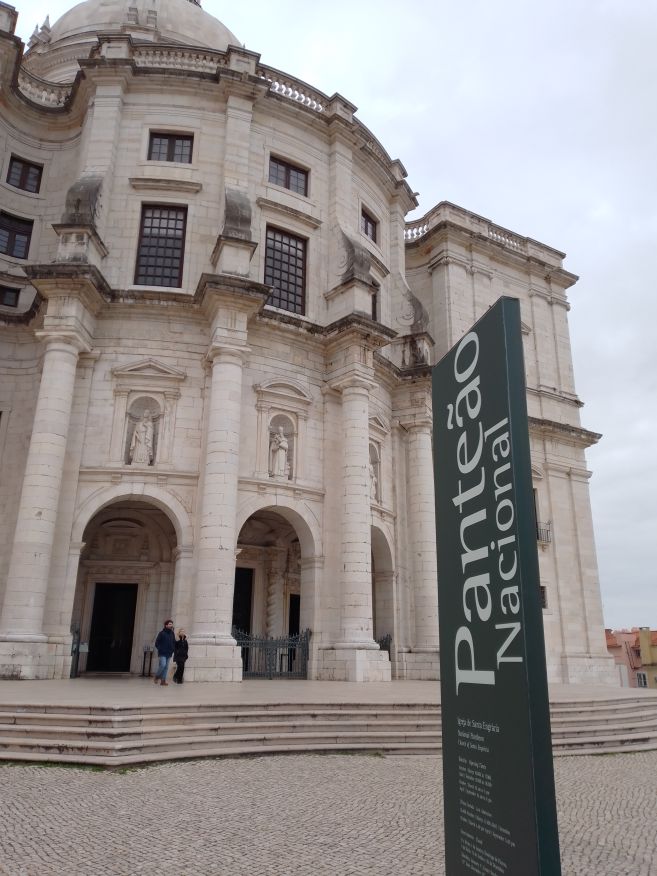World traveler Clown Tom Bolton
Adventure stories & photos

Tom’s travels in Southern Europe
Adventures in France, Italy, Portugal, Spain & Gibraltar
When I arrived in Europe in 1983 I started in Amsterdam and then went up to Sweden where I knew a couple of girls I had met in New Orleans. It was already September and cold so I headed down to Italy and as far as Athens, Greece. I would have stayed in Greece but I met 2 female Brazilian doctors who were going to Portugal and I decided to go with them. After a couple days in Lisbon they had to fly back home and I went to Spain where I spent the next 5 months including 2 months in the Canary Islands.
Dordogne, France
While in Valencia in November, I met a French girl Dominique and we traveled a while together. I stopped to see her in Dordogne, France in the spring and we started an on-going relationship that lasted 5 years. I was often in France to see her in the spring and autumn before and after my summer performing tours through Europe. Dominique came from a small town called Excideuil that was the epitome of beautiful Dordogne countryside. Although Excideuil was not big, it had a extensive castle that had been damaged in wars with the English but repaired and extended a number of times over the centuries. Richard the Lionheart was said to have failed on 3 occasions to occupy the castle. Funny I didn’t get better photos since Dominique’s parents lived across from the castle.
Countryside living in Dordogne
This was the little farmhouse, a couple of kilometers from Excedeuil, where we lived a number of years. The barn and fields were used by farmers for their sheep. In the background above the house one can see a cluster of about 7 farm houses. A local farmer had purchased one of them some years back for the land and big barn. Word got out that he needed money and the empty house was up for sale. This was back when one could still find the occasional property and fix it up to have a dream location; a number of the other houses there being weekend homes for rich people in Perigueux. I considered buying it thinking we could live there and if our relationship didn’t work out, I could even rent it out in the summer through a program to promote tourism in the area.
The agency would take care of the renting and as the target was summer tourists instead of long term renters; the income was about the same for the summer as a normal house would have gotten for a whole year. The owner was illiterate and drove his tractor to town as one didn’t need a driver’s license to do so. Eventually, it got sold to a relative as they were untrusting of “outsiders” although Dominique’s family was local as well. I was never sure how much time I might have spent at this house since I liked to go traveling in third world countries when I had the chance but I always ask myself “what if” as it was a fantastic location overlooking rolling farmland and I would really like to have that place now.
Learning to love cats
I was never much of a cat lover before I lived in France. But my girlfriend had a lot of very nice cats which really loved me and I liked to watch them hunting in the fields. Once I forgot to feed them and I came home to find one eating a rabbit and the other a lizard in our kitchen. Two of them had kittens a couple of weeks apart and we had around a dozen little ones running around. Now in Germany we have 3 cats and have had a few others in addition to about 15 kittens we gave away.
Dordogne, castles, truffles, foie gras
Dordogne was like a fairy tale come true, the cliché of old France, beautiful old castles, towns and many little farmhouses in the countryside. Of 88 departments in France it has the most castles and is an area known for its delicacies like truffles and foie gras. These next photos are from Salat, a medieval town that is so well preserved that many films set in older times are made here.
One of the world’s greatest treasures of stone-age art work is the drawings on the walls of Lascaux cave, estimated to be 40,000 years old. Lascaux was getting damaged from mold due to human presence so they closed it to the public but built an exact replica nearby for the tourists to visit. The people here were very proud of their heritage to the point where Dominique said she could never imagine living any place else.

Beynac, Dordogne, France
When she had time free from her job a nurse, Dominique showed me around many places in the region. Especially along the Dordogne River there seemed to be another castle surrounded by another quaint village every few kilometers; one of the more impressive ones is Beynac, shown in some of these photos which had legends of an oppressive Baron that tortured and imprisoned victims in the castle. This area was long a boundary between France and the English and the next castle over was regularly under English rule in this time. Beynac fell more than once to the English only to be taken back again.
Château de Hautefort, Dordogne
Another impressive castle just 16 kilometers southeast of Excideuil was the Château de Hautefort. It is built on a hill with a panorama view of the surrounding countryside including the valleys of the Lourde and Beuze rivers. First built as a medieval fortress it was reconstructed into a castle in the 17th century. Surrounded by extensive gardens it was complete with a moat and drawbridge. I visited with my girlfriend Dominique along with some of her friends including one of their daughters.
Lack of work in Dordogne
I saw so many fantastic places in Dordogne and was made very welcome although I was slow to pick up French. The older people all wanted to let me know how thankful there were for the Americans liberating them in WWII but on the other hand had nothing but scorn for American popular culture which they felt was crass. And to say that I preferred California wine to Bordeaux was considered an insult.
The real problem was that there were no big town to perform in and I needed to make a living. Dominique and most of her friends were nurses but unless you were a farmer, there were not many job opportunities. Most of the guys I knew were unemployed and going a bit crazy stuck at home watching the kids. So I would go off in the summer to Germany, Switzerland and Scandinavia. I wasn’t ready to settle down and have kids yet which was Dominique’s big wish so we eventually went our separate ways.
Strasbourg, region of Alsace – France
I went to Strasbourg in the region of Alsace a couple of times on very short day trips but took no photos. No explaination why I haven’t been there more often since it is just a couple of hours from Stuttgart. In April 2024 I went for a few days combined with a visit to Colmar. It was possible to get to Strasbourg with no additional cost with our monthly Deutschland ticket and one can just walk over the border bridge across the Rhine river from the German city of Kehl. Conveniently, the Strasbourg tram system extends across the border into Kehl, showing the modern level of cross-border cooperation in an area that changed hands multiple times over the centuries.
One of the highlights to any trip to Strasbourg is visiting the Our Lady of Strasbourg cathedral aka Notre Dame cathedral which is in the heart of the old city center. This catholic cathedral from the middle ages was the tallest building in the world for well over 200 years and is still the 6th tallest church world-wide. But it is it’s majestic and ornate Romaneque architecture rather than it’s size that impresses.
Strasbourg around the Cathedral
There are large open plazas on 3 sides of the cathedral and a number of impressive buildings including the Maison Kammerzell an impressive old commerical building and the Chateau Rohan (Rohan Palace) that now houses the museum for regional archeology and an art museum for works from 18th century. This area is always bustiling with tourists, a train for tourist-tours, some performers and vendors.
Strasbourg old city center.
The area around the cathedral is characterized by multiple plazas, pedestrian streets. Many government buildings, museums and institutions are built of massive stone and many shops and private buildings of half-timbered construction style typical to the area. There are numerous cafes, wine bars, restaurants and antique or souvenir shops. For a large city they have done an amazing job of limiting the types of businesses and encroachment of badly done modern architecture.
Strasbourg waterways and canals
The Rhine River runs along the outskirts of the city to the east but the municipality is a network of canals that have been added to the meandering Ill river. a tributary of the Rhine that runs through the city. The historical center is actually an island between branches of the Ill. There are even large boats that give city tours through on the Ill River. Some of the most pleasant areas are along the city’s waterways. The area known as “petit France” has many timbered houses that once belonged to the working class people and multiple canals making it slightly reminiscent of Amsterdam.
Strasbourg University
Strasbourg has a large and well respected university. Many of the older university buildings are massive structures comparable to anything the city has to offer and are located to the north side of the inner center. The university library is reminiscent of a parliament or major court house. Extending to the west there are many newer buildings showing off innovative modern design. Near the border of these 2 areas is the university’s extensive old botanical garden.
When one sees the Strasbourg cathedral and other large churches there one realizes that the society can be partially judged from the resources and efforts put into building religious places and castles. But all religions and governments rightfully have their detractors. It is also heartening to see that courthouses are also often majestic, legal systems often just supporting the powers that be but at least theoretically showing another level than just an absolute ruler or ruling class without some sort of recourse for the masses. Likewise, universities can be elitist yet the support of education and science is not something one should take for granted. Having a world class university is as much a showcase for Strasbourg and France as its palaces of worship.
Strasbourg, France security
Over the centuries the Alsace region changed hands between Germany and France. The second World War is hardly forgotten of course but not only have the countries moved on since then as close allies but even then many tried to limit the level of conflict. Not to excuse what Germany did but cities like Strasbourg and Colmar seem almost untouched. But just near the border by the first tram stop on the French side near where our hotel was is a tank left as a memorial. And a few times there were soldiers patrolling the streets – obviously to deal with potential terrorist actions rather than invasion. A more common danger to be dealt with is keeping the streets clean, like from dog doo.
Colmar, French region of Alsace
On our April 2024 trip to Strasbourg we did a day trip 80 KM south to the city of Colmar. It is just a 30 minute train ride but cost 30 Euro/person round trip. The city tram system ticket machines take coins but the longer distance trains one has to use a credit card or electronic payment system on a cell phone. There is a ticket office in the main station but it is not open on Sundays or at least in the early evening when first went to figure out getting tickets. Most of the French has some kind of yearly train card either for the region or the whole country. But it seems one has to get them there, not usually possible online from another country although one would think so from the website. But this is similar to the DeutscheBahn in Germany. Normal tickets are quite expensive but there are yearly cards for a 25, 50 or 100% discount. Also regional and even municipal days and/or weekend tickets, group tickets and now the Deutschland -Ticket. Plus one can get great savings booking ahead online. In the end, one rarely has to pay the full price but I don’t know that options like the yearly Bahncards or Deutschland ticket is really possible for someone not residing in Germany.
The main train station “Gare de Colmar” is a bit out of the historical center and the area doesn’t really suggest that one is in one of the most beautiful cities in France. Walking towards the center we passed the impressive court of appeals building and some stately homes and schools before coming to the park “Parc du Champ de Mars” and adjacent plaza “Place Rapp“; with a host of flags by an impressive statue of General Rapp. From here on it was a charming almost enchanting city core of majestic old buildings like the cathedral, multiple churches, theaters, museums even the tourist information office is majestic. Many of the lesser buildings are half-timbered construction. Nearby is the red-stoned municipal theater and the tourist info office.

Unterlinden Museum, petit train and storks
Colmar Tourist information is across from the Unterlinden Art Museum which was once a Dominican Convent and a small park where we once again spotted a pair of storks in the trees; an iconic symbol of the region. This is also the starting point for a small train on wheels that offers tours around the town.
Colmar city center
There is a maze of pedestian streets and plazas to stroll through and enjoy the old world charm. There is also a section called “Little Venice” where tourists can take a boat on some canals for a unique view.
St. Martin’s Catholic church, Colmar
Like the Notre Dame Cathedral in Strasbourg, the St. Martin’s church in the center of old Colmar is the largest religious structure and a dominant feature of the historical landscape. One door was open but there was a barrier so entrance was not allowed and it was not lite well to see the interior.
Italy, Venice
In autumn 1984 I was in Stuttgart, Germany and it was cold and rainy. Another American juggler Steve Goetz had shown up in town and we said, “this sucks, why don’t we go to Italy”. So we went off to Milan, Florence and Venice. Eventually I would see Rome and work occasionally in Verona and the small cites by Lago de Garda. Venice was a fantastic place, which I was to visit again a number of times in the future although the police were always quick to stop any street shows.
Steve and I ran into 2 brothers who were childhood friends of his who I would later visit in New Zealand. Unfortunately I have no photos from that first trip. Coincidently, I took these following photos on my last trip to Venice with my Austrian friend Uli, who I had originally met in Kathmandu. On the same day, whom did I run into in Kathmandu but my old buddy Steve.
Venice – St. Mark’s Square
Although the defining characteristic of Venice is the canals there are also streets of course. Strolling around not worrying about where one ends up other than finding an occasional nice café is part of the charm. When one stumbled on a backstreet it was often a display of the locals’ laundry. And the center of Venice is the well-known St. Mark’s Square. It is a meeting place, lined with cafes and just a beautiful spot to hang out when it is not under water. One just wonders how long Venice will be viable to live in as sea levels rise.The pictures taken here were taken while on a trip with my Austrian friend Ulli, a fellow traveller and great soul.
Venice, Italy – redux
I made another visit to Venice, Italy in July 2018. I met up with my older brother, his wife and youngest son who were on a tour that took them to Greece, Croatia, Montenegro and Venice. Thanks to my brother’s generosity, I had a room at the Hotel Dalla Mora ideally located near the bus station and got to visit some palaces and eat lots of great meals. Otherwise, I couldn’t have afforded to spend 5 days, 4 nights in such an expensive tourist location. It reminded me how beautiful Venice is; definitely worth visiting but pricey.
Our first destination was to stroll through the city to Plaza San Marco and back .But as the cliché goes, it’s the journey and not the destination that counts. As befitting any good Italian city, there are numerous basilicas like the Santa Maria della Salute. Much of the city consists of narrow streets and canals but also some larger plazas or open areas called “campos” in the local dialect like the Campo Santa Margherita.
In a city full of canals, boats are of course an important form of transportation. There are public boat buses which ply the Grand Canal and around to the surrounding islands and mainland. The smaller canals are sometime congested with boat taxis, gondolas and delivery boats including the post and UPS.
Venice, Italy – Plaza San Marco
Here is another photo of me on the famous San Marco plaza. Half of the plaza was blocked off for a concert. But like we saw at a couple of fancy cafe-restaurants nearby there was a band playing classical music. I eventially did see a couple of street bands but no other street performances which I’m sure are still strictly fobidden.
Gondola tour through canals of Venice
Near San Marco Plaza we took a gondola ride through the city. It was a nice perspective. I had never spent the money for such a thing but I was invited and I understood that when people have a one in a life time trip to Venice they would consider such a splurg.
Venice Palaces, Doge and Ca’ Rezzenico
The 2 most famous sites on San Marco Plaza are the Basilica and the Doge Palace next to it. After our gondola ride we visited the magnificent palace. Some rooms had artifacts but mostly it was open spaces adorned with reliefs and paintings on both the walls and directly on the ceilings. There was also an armory and prison cells. Another day we visited the place known as Ca’ Rezzonico. Venice had been a city built on trade and its’s rulers were merchant families rather than royalty. Their residences were however as opulent as any royal palace anywhere in the world. I took a photo of the city skyline from an upper window of Rezzenico but otherwise photos were not allowed in the interior.
Venice, Murano Island – glass blowing
Venice is comprised of multiple islands. In addition to the main one, another is Murano Island connected by the public boats. Murano is home to many glass factories where they blow and hand craft glass. Sculptures, vases, small figures, bobbles for jewelry – just about anything one has ever seen made out of glass is produced here. We visited one place that offers free demonstrations. It was interesting and one of the few things with free admission. Of course they have the advantage of then leading one into their shop or into the exclusive studio where the more expensive and custom creations are done. Some of the effects are impressive but much of the objects were very kitschy. One could spend more than a day trying to visit all of the glass shops on Murano and every other souvenir shop in Venice has Murano glass objects.
Venice death notices
A peculiarity of Venice that I have never seen elsewhere is papers with obituaries hung up on public walls. I saw at least a dozen of them through the town. I assume they are people who died in the vicinity but not sure why they are used in this manner. At first glance, I thought one must be for another missing cat or something.
Spain, Seville, Andalucía
I traveled extensively through Spain my first year in Europe. Among other cities I visited Barcelona, Madrid, Salamanca, Toledo, San Sebastian but spending most of my time in Andalucía in the cities of Granada, Cordoba, Malaga, Torremolinos and especially Seville. My first winter in Europe I ended up going on to the Canary Islands for a few months. I also made a number of later visits to the south of Spain as well. Unfortunately, I no longer have photos from that part of my early travels except for these ones from Seville.
Sites of Seville, the cathedral
There is a large old city in Seville that is a rat’s maze of narrow winding streets flanked by white walls. For security and privacy the architecture was designed to hide the dwellings from public view as much as possible. On one edge of the old city is the Gothic cathedral known locally as Catedral de Santa María de la Sed. It’s is supposed to be the 3 largest church in the world. My impression at the time though was that it lacked intricate detail on the exterior. Interestingly, the building was initially a mosque built during the moor occupation. It was converted to a church and expanded and renovated over the centuries. The Cathedral bell tower is known as Giraldi and was originally a minaret.
Alcazar Palace
Close to the cathedral is the royal Alcazar palace. Like the Cathedral it was later declared a UNESCO World Heritage Site. It is built on the site of a former Muslim residential fortress that was razed during the re-conquest. The interior has intricate designs and extensive gardens. Although built by the victorious Christians, the architectural design shows strong Muslim influences. Some of the upper floors are still occupied by the royal family. While the King is just a figurehead rather than ruler, the monarch still has a lot of indirect influence on the society. And while the government was ruled by the socialist party in the early ‘80s the oppression of the Franco era was still fresh in people’s minds. There was a very active nightlife and party scene in Seville that sometimes seemed almost excessive. But when pointed out I was reminded that it wasn’t so long that the people could express themselves without fear of repression.
Maria Lousie Park, El Cid statue
Southwest from the Cathedral and Alcazar is a series of parks and gardens with the University and various plazas and palaces like San Telmo and fountains like Fuente de los Leones within. The main park is called Maria Lousie Park and there is an iconic statue of El Cid along one of the main streets. Characteristic of this area are walls with ceramic murals and fountains.

Plaza de España
Adjacent to the park system is the large Plaza de España complex. Interestingly, the name refers to the majestic half circular series of building as much as the actual plaza in front of it. Not built until the 1920’s in connection with the World Fair, it has a mixture of Art Deco, Renaissance Revival, Baroque Revival and Neo-Mudéjar styles. While one might assume it was some kind of royal property, these were always primarily government buildings. One outer wall of the complex has a series of ceramic decorated alcoves dedicated to each of the Spanish provinces.
Museum of fine arts, Museo de Bellas Artes de Sevilla
To the Northwest of the historical center is the Museo de Bellas Artes de Sevilla, which contains a wide range of Spanish art. The former convent building dates back to 1594 but was first used as a museum in 1839 when many monasteries and convents were shut. Included in the collections are works by local artists who flourished during a gilded period in the 17th century.
Hanging out in Seville
I ended up in Seville numerous times including before and after my winter in the Canary Islands. I was trying to live cheap and do an occasional show to make some money. Thus I rarely spent time paying to go into the sites with admission charges or taking many photos. There were big open areas near some of the tourist sites but the people didn’t really hang around to possibly watch a street show – at least in the late autumn and early spring. Thus I ended up performing more in the main shopping district, which was hectic and often controlled by police.
While we stuck to beer, the problem was that although he was small he would want to drink a dozen beers in an evening while I was content to have 2, especially being on a tight budget. After one of these nights out he couldn’t find his watch and later told me he had suspected me of stealing it. He assumed my skills of juggling and some magic meant I could pick pockets and steal watches. He only told me this later after finding he had left his watch on his balcony when he was too drunk to remember.
Flamenco & fiestas in Spain
Like in the photo with Joaquin, there are many such plazas throughout the city that one stumbles upon while trying to find ones way down the narrowing, winding streets. Whenever there is a holiday and there seemed to be one on almost a weekly basis, the young people would go to such plazas and sing and dance flamenco. It was interesting to see their pride in keeping old traditions although mega discotheques and now rave clubs were prominent as well. In 1984, Spain was relatively cheap and the people were still celebrating their freedom after the long reign of Franco. I don’t smoke but hash was supposedly legal at this time and what’s sure is that there was always a party going on.
I had flown from Seville to spend Christmas and carnival time in the Canary Islands but returned for Easter and the elaborate Semana Santa or holy week rituals where large statues or crucifixes were carried from the many churches and paraded through the streets. Most participants wore hooded robes reminiscent of the Klu Klux Klan. Many carried large burning candles and spectators would fall to the ground to catch the wax drippings on cards with depictions of holy figures and prayers on them.
It was quite the religious spectacle but the hedonist carrying on during carnival had been just as extreme. A week after the holy week finished was the start of the weeklong Feria (fair) de Seville. Possibly the biggest festival in the world, there were said to be over a million people on the fairgrounds some evening. There were even 2 circuses set up here. I tried to do some short shows especially juggling with torches at the fair but it was too much of a madhouse. One time some of the artists from one of the circuses saw me and invited me to party with them as if I was a star.
Mallorca
I returned to Spain in the following years a couple of times but just for short visits. There is a group of islands off of the northeastern coast of Spain called the Balearic Islands that include Mallorca, Ibiza, Menorca and Formentera. In more recent years, I went to the island of Ibiza after the tourist season was over to see my friend Hugo and his family. I also went to Mallorca for a week with my wife. It was also the very end of autumn and many of the places were shut for the winter but we got a very cheap big hotel with “all included” which meant not just food but drinks but alcohol as well! I can imagine it being obnoxious in the high season with so many out of control tourists but it was rather quiet and enjoyable when we went. Unfortunately I didn’t have a camera along on these trips.
Ibiza
In 2017 I made my third trip to Ibiza. I spent a lot of time with Hugo who is a good clown but has spent most of the last years making and selling hand puppets. There are a number of “hippy markets” where he sells along with the many vendors of cloths, jewelry and trinkets. Much of it still has a hippy flair to it which grew out of the late 1960’s and early 1970’s when the island became a favorite hangout for young people wanting an alternative life-style.
Other than enjoying the beaches, the main attraction these days are the many large discotheques. Some of the world’s biggest clubs are in Ibiza and a DJ who makes his name there is in demand worldwide. I would have checked such places in my younger years but such a scene is no longer my thing. Another thing I didn’t get around to until my last trip was to actually visit the main city of Ibiza Town. The old part is very quaint. From the harbor it is built up on a high hill topped with fortifications, churches, municipal buildings, a convent and lot of small houses.
Ibiza – Playa Can Salada, Santa Eularia
Here are a couple of photos not taken in Ibiza Town. Playa Can Salada is a beach in a harbor surrounded by steep cliffs. It is a bit east of San Antonio the third biggest city in Ibiza located on the northeastern coast. It was a bit of a drive from where I was staying but one of the more interesting settings. The other photo is from Santa Eularia, second biggest city on the Island, on the south central coast, north of Ibiza Town. This is where my friend Hugo lives. There is a small but vital river that empties into the sea just below this viewpoint. This is the culmination of the watershed from the south central part of the island. The irrigation provided by this river was historically the source of much of the islands agriculture. They have built a nice walkway here that attracts a lot of birds.
Cruise ship – Barcelona
Then in November 2015 I went on a cruise ship for a week along the Spanish coast. I never thought to travel on a cruise ship but as a performer I was always curious to check out the conditions. A friend of mine is mostly doing ships and was able to invite me for no extra cost. So I took a flight to Barcelona. We spent a night, got a taxi to the ship in the morning and after having checked in walked a bit around the center of the city, where this first picture was taken.
Wreck of a ship
No, this was not our cruise ship. It was another shipped parked right in front of us in one of the ports though. I don’t know anything about its story but it was an unusual and interesting site.
Sailing to Mallorca
From Barcelona we set off to Palma de Mallorca. We only saw some of the main areas around the cathedral but I had seen the city more extensively years before with my wife. There is a lot of majestic architecture that reflects the wealth of those who either live or have connections here. Since more than a hundred years Mallorca was popular for Germans and wealthy elites from other European countries due to its moderate semi-tropical climate. Now days, the German presence is very apparent with lots of German bars and restaurants. Fortunately, the locals have pressured the tourism board to crack down on the excessive drinking and loud music that many low class German tourists are known for here. Only the English are worse behaved but the Germans outnumber them.
Alicante
Next stop was Alicante, a pretty town I had not seen but we only found time to see a bit of the center as well as shown by these photos. The town had a lot of history but was obviously not as wealthy and majestic as Palma de Mallorca.
Motril, Alhambra in Granada
We stopped in Motril which is a small town with a big port from which many ship-goers arranged a visit to the Alhambra in Granada. I didn’t elect to spend the time and stress of such a rushed trip as I had seen the Alhambra and extensively explored Granada many years before. For anyone who hasn’t seen it, it’s one of the top tourist sites in Spain. Originally a small Roman fortress it fell into ruins but was rebuilt in the 13th century and made into a sprawling fortress and palace by the Arab conquerors of Spain. It eventually fell into disrepair again after being recaptured by the Spanish Christian kings. Yet it is still contains some of the best examples of Islamic architecture in Europe.
Motril itself was not overly interesting but there was a beach next to the harbor and the day was not only warm enough to lie in the sun but the water was surprisingly enjoyable as well. I felt the need for more exercise so walked from the beach to the ship. I had plenty of time yet my legs were collapsing by the time I arrived. What I was to find is a common problem is that many harbor facilities are very extensive and with buildings in the way, one loses sight of the ships and the orientation to find the most direct route back.

Gibraltar
The next photos are from the next port Gibraltar. It’s a small point sticking out from the Spanish peninsula belonging to Britain. It has a long history of European rivalry and attention as being a strategic point at the mouth of the Mediterranean. It is a strange mix of English people who want to escape the cold and life style of their own country and Spaniards who cross over to work. I had the feeling that there is a tradition of piracy and smuggling yet if a lot of wealthy people are stashing their loot here it doesn’t show in the city which for the most part looked rather run down. The first view is part of the main square from where the main pedestrian street starts. The second view with the canon, from the upper side of the city above an old Moorish fortification. A big hit at the souvenir shops were stuffed animal monkeys, something one sees a lot of on the peninsula. Like one would expect, much of the old architecture is a mixture of traditional English and local styles. The most peculiar thing was to look down and see the airport runway – crossed by a street!
Cartagena, Spain
Cartagena was the last stop back in Spain as we headed to the final port of Civitavecchia, Italy. There were some majestic old buildings and a lot of ruins, many of which were from the Romans. There were a number of people in the streets dressed in Roman costumes that posed for pictures with the tourists. It wasn’t clear to me if they did this for donations or if they might have been sponsored by the city or tourist board.
Spain – Canary Islands: La Palma, Tenerife, Lanzarote
For Christmas time 2023 I went on a cruise ship that left Madeira and went to 3 of the Canary Islands. Our first stop was Santa Cruz de La Palma. It was easy walking distance from the ship into the center of the city. Lots of Christmas decorations and nativity scenes around as we strolled up the main pedestrian street.
Ayuntamiento de Santa Cruz de La Palma – City Hall
Partway up the pedestrian street Calle O Daly was the Ayuntamiento de Santa Cruz de La Palma or City Hall which had a lot of decoration and a singing performance going on. Just across was the Plaza de España or Plaza of Spain and the majestic church Parroquia Matriz de El Salavador.
Biblioteca Municipal + Mercado
Above the Plaza de Espaňa was the back side of the Parroqui Matriz de El Salavador and the attractive Biblioteca Municipal or city library. We also found the city market, some nice side streets and he city market Mercado de Santa Cruz de La Palma. The city market didn’t just have stalls but alos old photos on the wall and details of the history of the market.
Museo Naval Barco de la Virgin
At the end of the pedestrian street there was a cool park with a strange statue but not sure of the names. A bit farther was this shop and then a large wooden ship housing the Navel Museum or Museo Naval Barco de la Virgin.
Ermita de la Luz –Ascensor de la Luz
We returned down to near the entrance to the port and my friend John returned to the ship as he was going to prepare for his stage show in the evening. There was a large round-about there with a nativity scene and nearby a free municipal elevator called Ascensor de la Luz that took one up the cliff to the pretty Ermita de la Luz church where there were good views over the harbor.

Santa Cruz de Tenerife Canary Islands, Spain
Parroquia de San Francisco de Asis, Plaza del Principe de Austurias
The next stop after La Palma was on the island of Tenerife, the capital city there also called Santa Cruz. It was not really as quaint as in La Palma One of the first nice places we came to was the Parroquia de San Francisco de Asis. It is a beautiful cathedral with large trees in front. Behind it was another nice park called Plaza del Principe de Austurias. I had been in Tenerife in late early 1984 but nothing really looked familiar. Back then I had tried to make juggling shows amidst all of the street vendors and had not really seen the sites.
Plaza Veinticinco de Julio “de los Pataos” Santa Cruz, Tenerife
We strolled to a small but beautiful park in a roundabout with large trees and ceramic benches and a circular fountain with ceramic frog figures known as Plaza Veinticinco de Julio “de los Pataos”. The benches wre obviously old but all had a company name advertisement for the ages included. Bordering the park were some impressive buildings; the Inglesia de San Jorge, Palacete Matri Dehesa and the very interesting yellow Casa Quintero. The last building being available to rent for events.
Plaza Candelaria, Plaza de España, Castillo San Cristobal – Santa Cruz, Tenerife
After getting a coffee in a park we went down a major pedestrian shopping street that ended in the Plaza Candelaria. There were Christmas decorations and a large nativity scene. Towards the waterfront is the large Plaza de España that had many stalls with Christmas offerings. Nearby was the Castillo San Cristobal which was covered by a mesh scaffolding and seemed to be being either cleaned or restored.
Lanzarote, Marina. Canary Islands – Spain
The last stop in the Canary Islands was Lanzarote. It is more or less a pile of volcanic cinders with virtual no natural green. There was a shuttle but from the ship as it was a ways to walk but it actually went to the Marina area rather than into the city center of Arrecife as I expected and I didn’t really have time to walk all of the way there. In the Marina area I first passed a fairground set up for Christmas. Then there was a bay where many small boats were anchored and the shoreline lined with lots of restaurants. Seems the British passengers mostly took the opportunity to pay out of pocket to get something other than the ship’s British food.
Parroquia de San Ginés, Castillo de San Gabriel, history museum
The most picturesque place in the area was the Parroquia de San Ginés, a church ona plaza with some nice palm trees. Not far away was the Castillo de San Gabriel history museum.
Portugal – Funchal, Madeira
Late 2023 I went on a cruise ship trip invited by my friend John Nations who was hired as a comedy juggler. We both flew to Funchal the capital city of island of Madeira where we spent 2 days before getting on the British ship the Ventura. This was right befoe Christmas, so there were Christmas markets and decorations all over. Not quite beach weather but warm and mostly sunny. The island is very mountainous and green but we had no time to check out any of the many hiking trails.Just wandered around Funchal and took a cable car up to the Madeira tropical gardens area.

Lisbon, Portugal
On my trip from Madeira to the Canary Islands at Christmas time 2023 I ended up in Lisbon where I spent 2 days. I had actually been in Lisbon for a day or two back in the early 1980’s but remember nothing about it. On the earlier trip, I had met 2 Brazilian doctors in Italy, went briefly with them to Athens, Greece before going overland to Lisbon. But as I didn’t speak Portuguese but some Spanish, I left to go to Spain and never made it back again to Portugal. The first photos are from the port upon arrival in Lisbon.
Terreiro do Paço – Praça de Commercio
From the harbor area it is a short walk to the Terreiro do Paço – Praça de Commercio or territory of Paço, commercial plaza which has some modern and old statues, including the equestrian statue of Dom Jose I in the center or monuments. It is surrounded by old building including some museums and a large archway, Arco da Rua Augusta that leads to a major pedestrian shopping street.
Lisbon is very hilly and it has many winding, often narrow streets often laid with mosiacs of stone.
Sé Catedral de Lisboa
Heading up from the harbor area I came to the cathedral known as Sé de Lisboa. I did not enter although it apparently has lots of things to see but I had little time in Lisbon and like many churches there had an entrance fee.
Castelo de Sao Jorge or Saint George’s castle
At one of the highest points in the old city is the Castelo de Sao Jorge or Saint George’s castle. It seemed to be an extensive complex with good views over the city center but again I had little time and it was rather expensive. I wandered the winding streets around, often finding my self at dead-ends. An interesting sight was a guy playing music, busking from his upper window with a basket on a rope to collect donations. And he wasn’t bad.
Igreja de Santa Cruz do Castelo
Not far from the castle complex was a interesting looking church called Igreja de Santa Cruz do Castelo. It also had an admission but also samll musuem that what is supposed to be one of the better viewpoints in the area.
Miradouro das Portas do Sol – Miradouro de Santa Luzia
From the castle complex area I had to backtrack a bit back towards the Sé Cathedral and up the hill. Near the tram stop Portas Sol one find the Museu de Artes Decorativas or Decorative Art Museum. Nearby are some good view towards the harbor known as Miradouro das Portas do Sol and Miradouro de Santa Luzia. On the Parça Julio de Castilho one finds the statue of Saint Vincent.
Igreja de São Vincente de Fora and Panteão National
Continuing up to the west from the multiple outlook points were 2 impressive buildings that are standout on the skyline of Lisbon. The Igreja de São Vincente de Fora – or church of Saint Vincent of Fora. The other being the Panteão National – or national patheon.

Praça de Espanha –Spanish Plaza Traffic lights
Near the Praça de Espanha is a major intersection where many performers do quick shows at the traffic lights. This was popularized in Argentina and spread throughout South America and to some cities in Europe that allow it. The artist will wait for the red light and go out in front of the cars and do a quick number and then try to collect money through the car windows. Tough way to make money but my friend John had done it while on an extended stay in Lisbon and seems to like it despite being successful on cruise ships. John went out to show me how it is done.
From there we walked to the large Corte de Ingles shopping mall passing this large but kind of dreary looking building that was being renovated. Not sure if it was a castle, or possibley a former prison or hospital. Will update if I find out what it is.
Parque Eduardo VII – Jardim Amalia Rodrigues , Pavihao Carlos Lopes
We then waked down towards the center/harbor area through the Parque Eduardo VII, containing the Jardim Amalia Rodrigues. On one edge was the Pavihao Carlos Lopes pictured here. In the center of the park was another fairgrounds set up for Christmas which we avoided. At the bottom of the park is the impressive Marques de Pombal statue in a roundabout.
Praça do Municipio, Cãmara Municipal, Museo do Dinheiro
Having returned down near the harbor to the Praça Comércio, I went west to the Praça do Municipio – or municipal plaza. On one side one has the Cãmara Municipal or city hall and next to it the Museo do Dinheiro or money museum.
Igeja de Nossa Senhora do Loreto, Igreja de Nossa Senhora da Encarnação, Praça Luis Camoes
Going north there is an area known as Baixa Chiado witha pedestrian shopping street called Rua Garrett. Going west on comes to two large churches right across from each other; Igeja de Nossa Senhora do Loreto, Igreja de Nossa Senhora da Encarnação.
Praça Luis de Camõas, Estátua a Luis de Camõas
Just farther west is the Praça Luis de Camõas with the statue Estátua a Luis de Camõas. They had some interesting Christmas decorations here. Unfortunately, it started to rain and the sunlight was fading so I could not continue taking pictures.
So, those were just a few tales from my many travels over the last thirty and something years. I hope you've enjoyed another side of a traveling clown! If you want, write me an email or better yet, book my show or set a link to this website or just state me as the beneficiary of your will!
To book or see more information about Tom's clown show and entertainment, visit one or both of his clown websites:
Clown Stuttgart www.clowntombolton.com
Clown juggler Stuttgart, Gremany www.clown-event.de

